|
A personal view from James Capon
Introduction Dietary guidelines and other government sponsored recommendations increasingly tell us to eat less meat, particularly red meat and consume more plant-based foods, both for our personal health and for the health of the planet. Yet a growing body of research shows it's not meat but an increasing proportion of ultra-processed food in our diets that is harming us - and the planet too.  A plate of tasty Sicilian vegetables, but is their most important health attribute that they are plant-based? A plate of tasty Sicilian vegetables, but is their most important health attribute that they are plant-based? Nutrition or nutritionism The abundance of research analyses telling us what to eat and what not to eat, all grounded in scientific microanalysis is not leading to a healthier world. When chronic, non-communicable diseases such as type-2 diabetes have reached epidemic proportions, the studies seem increasingly to be beside the point. The much used metaphor of rearranging the deckchairs on the Titanic often comes to mind - and in nutrition circles, this seems to be on a weekly basis. There are other factors involved. I am left wondering why there isn’t more emphasis on the quality of what we eat in its entirety; on its provenance, preparation and even our eating experience - how and where and with whom we eat our meals. After all, the French spend on average twice as much time on eating their food as Americans: two hours and 13 minutes in total per day. Are they healthier because of that? Could it be that consuming food primarily for pleasure rather than seeing it as a source of human fuel (nutritional sustenance), makes you a happier and healthier person?
Let’s be honest. Dietary advice doesn’t have a good track record In the 80’s, 90’s, and noughties, we switched to low-fat or no-fat milk, avoided butter and consumed egg white omelettes and other tasteless horrors, while steadily eating more and more sugar and sweeteners. Nutritionists advised us that cholesterol in food was bad for us (not true), that natural fats such as butter and cheeses would clog our arteries (absolutely not true) and that fibre-rich cereals would improve our digestion (maybe true for some, but not me). Packaged foods proudly showed off their heart-healthy and five-a-day labels approved by institutions like the American Heart Association, rather surprisingly including cans of beans and spaghetti, and cereals such as Honey Crunch Corn Flakes. Back then, calorie control was the main slimming message but as the adage goes, if WeightWatchers (formed in 1963) really did help you to lose weight, the brand would not still be around today (even in its slimmed down WW format). What we are left with 20 to 50 years on is increased levels of obesity, type-2 diabetes, food consumption related cancers, mental disorders and a whole range of eating disorders. In related matters, in spite of the efforts of Big Tobacco, we succeeded in cutting back our smoking habit thanks to a blend of clear research data and excellent well-funded public health campaigns. And, we discovered (re-discovered?), re-interpreted or perhaps re-invented the Mediterranean Diet. We all agree on the nutritious benefits of the Mediterranean Diet... don't we? The Mediterranean diet was defined in 1973 by Ancel Keys, the American researcher who believed that replacing dietary saturated fat with polyunsaturated fat (aka vegetable seed oils) would reduce cardiovascular heart disease. More recently, the Harvard definition has become established as the norm for research purposes: "a primarily plant-based eating plan that includes daily whole grains, olive oil, fruits, vegetables, beans and other legumes".
In other words, the food and cooking experience was recognised by UNESCO as being equally important to the food itself, which jars with the focus of most reductionist research papers which generally adopt a food-for-fuel approach. On the other hand, perhaps that's not surprising when you consider how much more difficult it is to incorporate measurements that reflect the qualitative nature of the eating and cooking experience. There are 21 countries that share coastlines along the Mediterranean Sea. Ancel Keys focused on Italy in his 7 countries study over 70 years ago, and that's the main reason why his post-war experiences working almost exclusively with white males have led to this bread and pasta rich dietary advice. Ironically, if you travel along the coast to the south of France or Spain, you can enjoy a range of decidedly non-mediterranean diet alternatives. The Spanish love their pork, having the third highest per capita consumption rate for pig meat on the planet and still manage to achieve below average rates for type-2 diabetes. So as we now approach the end of the first quarter of the 21st century, it is worth asking whether those giving us today’s dietary advice are making further mistakes? And if so, what will the consequences be this time? The Influencers  Gunhild A. Stordalen, Founder and Chair of the EAT Foundation at the launch of the EAT-Lancet Report on Food, Planet, Health. Gunhild A. Stordalen, Founder and Chair of the EAT Foundation at the launch of the EAT-Lancet Report on Food, Planet, Health. A lot of what happens in dietary communication comes down to the lobbying power of the key movers and shakers in the nutrition world. In the late 20th century, the loudest voices spoke out against saturated fat, inadvertently driving us towards harmful trans-fats and an excess of omega-6 rich seed oils. Today, these influencers are cosying-up to the vegan groundswell that has crept up on us, albeit more in the name of reducing greenhouse gases than improving nutrition standards. Two pieces of research have been quoted more than any other in this context, firstly, the EAT_Lancet Commission on Food, Planet and Health in 2019 which brought together 37 scientists from across the globe and posed the question: “Can we feed a future population of 10 billion people a healthy diet within planetary boundaries?” The answer, published as a report just over 5 years ago, has been cited many times and become a major source of influence for those recommending dietary interventions. The core recommendation for all global citizens was to limit our annual meat intake to 15.7 kg per person per year to keep in line with our greenhouse gas related climate goals. Put in context, that’s around eight times less than the current recommended amount in the US. I should note at this stage that the key authors of the report, Messrs Willett and Springman and the Chair of the EAT Foundation were already well known for their anti-meat views. The EAT Foundation also includes many links via its Fresh arm (the Food Reform for Sustainability and Health program formed at Davos in 2017) to the ultra-processed food manufacturing community, from PepsiCo to Nestle and more. But let’s put that to one side. Meat eating was also addressed in another highly influential scientific report, the Global Burden of Disease Risk Factor analysis (GBD), which announced to loud fanfare that deaths due to eating unprocessed red meat had increased a remarkable 36-fold between 2017 and 2019. Given that their 2017 report stated that diets high in red meat were considered to be the least important of 15 dietary risk factors, this was indeed quite extraordinary. In the space of just two years, eating red meat had apparently become the fifth leading global dietary risk factor for deaths and disability-adjusted life-years. What was going on? Flaws in the studies, but never corrected The overall message from these studies, when taken at face value, is that both for the good of the planet and for our own health, we should be avoiding red meat, or at least limiting its consumption to special occasions while also reducing chicken, pork and fish consumption by considerable amounts. But there were major flaws in both studies. The EAT_Lancet recommended diet has for example, been found to be inadequate in iron, zinc, calcium and vitamin B12. That is where a reductionist scientific approach, when applied appropriately, can be of great help. As to the GBD’s authors, they admitted after other scientists had examined their data, that red meat could in fact be protective and that there was a “clear protective relationship between red meat intake and haemorrhagic stroke”. This subject matter has been taken up recently by Professor Alice Stanton in a contribution to the science journal Nature made in February 2024, where she points out that despite the public acknowledgement of many errors and limitations in these two papers by their authors, they have never been corrected appropriately. A search still brings you to their original published papers, so if for example you are a journalist putting together information on the topic, you may never discover anything about the mistakes. Because of this, Professor Stanton argues, significant reports at national and international level continue to erroneously influence food policy decisions and international dietary guidelines. She cites revised guidelines such as the World Wildlife Fund’s Livewell Diet, and the Nordic Nutrition Recommendations from 2023, but there are many other influential touchpoints created by these flawed and uncorrected scientific reports. What is clear is that many pretty radical diet-related decisions are being taken today based on incorrect or flawed nutrition research. Let's look at Denmark and New York City - to review just two such touchpoints. A new action plan for plant-based food in Denmark 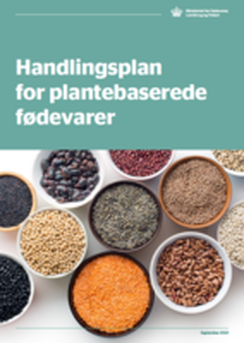 New Danish plant-based guidelines from late 2023 New Danish plant-based guidelines from late 2023 The following words are from Jacob Jensen, the Danish Minister for Food, Agriculture and Fisheries, in his forward to Denmark’s new Action Plan for Plant-based Food. “Plant-based foods are the future. There is no doubt that if we want to reduce the climate footprint from agriculture, we must all - in line with the Official Dietary Guidelines - eat more plant-based foods.” But is there really such a direct correlation between reducing the climate footprint from agriculture and eating more vegetables? Can we convincingly say that avoiding red meat will make us healthier? The EAT_Lancet plant-friendly diet, represents a health risk because of the low levels of nutrients and micronutrients recommended – particularly relating to iron and zinc for women of reproductive age. An admittedly small study published in early 2024 showed that newborn babies of mothers who consumed a vegan diet weighed on average 240 grams less than babies born to mothers who followed an omnivorous diet in pregnancy.
The city of Amsterdam has recently become the first capital city in the EU to back a so-called plant-based treaty, whose goal is to combat the environmental impact of animal agriculture and promote healthier, sustainable plant-based diets by transitioning from animal-based diets. Already in 2021, Amsterdam unveiled plans to encourage residents to move to a diet that is at least 60% plant-based by 2030, in collaboration with public institutions like hospitals and community centres which needed to enhance the availability of plant-based food. The EAT_Lancet study is cited in both cases.  Mayor Eric Adams of NYC Mayor Eric Adams of NYC This Plant Based Treaty initiative, has now been endorsed by 21 cities worldwide, including New York City. Mayor Eric Adams is a leading voice in the movement having declared that he reversed his own diabetes after shifting from a processed food diet, consisting of fast food and donuts, to a whole foods plant-based diet. “I saw an immediate difference in my health. Within three months, I lost weight, lowered my cholesterol, restored my vision, and reversed my diabetes.” (Sounds to me as if Mayor Adams was previously enjoying what’s become known as SAD – the Standard American Diet. This author would certainly support more people eating whole foods vs ‘SAD’ ultra-processed foods, but that’s not how the mayor interpreted things). As well as Meatless Mondays, Friday menus are now entirely vegan in NYC's public school system which serves over a million students in 1,800 schools. It will be interesting to assess the consequences some years down the road.
The dangers of eating too much ultra-processed food The negative nutritional impact of eating too much ultra-processed food (UPF) is completely missing from the new Danish action plan. In so doing, the report ignores both highly industrialised farming (pesticides, petrochemical fertilizers etc.) and the food industry’s manipulation of basic foodstuffs to create ingredients such as maltodextrine, high fructose corn syrup, protein isolates, or its use of processes such as the enzymatic hydrolysis of carbohydrates. Such ingredients and enabling processes determine the nature of many of the so-called plant-based foods which Danish consumers are being encouraged to eat. In a way, this omission is unsurprising given that the major influence for this Danish plan came from the EAT_Lancet report referred to earlier, which chose to not mention the term ultra-processed food... not even once. 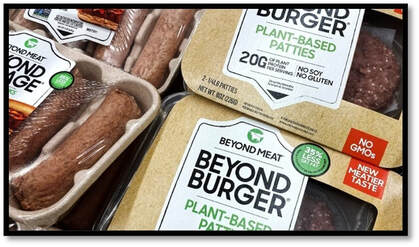 Preferred food at institutions around New York Preferred food at institutions around New York The implication from the Danish report is that eating meat and dairy foods contributes to an ‘unhealthy diet’, but this is simply not true. In fact, as Professor Stanton points out, the lessor bioavailability of protein and key micronutrients from plant-source foods versus animal-source foods is not adequately recognised nor addressed in any of the reports which have influenced such action plans. The same goes for New York City where the irony is that the mayor refers to moving away from a processed food diet, while his office serves up highly processed Beyond Beef burgers to visiting delegations. A more constructive message would be that putting health first means avoiding ultra-processed foods whether they are of animal or plant-based origin. In popular ready-made foods like chicken nuggets or fish fingers, the meat proportion is often less than the amount of fillings and coatings. Britain's best-selling sausage, for example, only contains 42% pork, but plenty of flavourings, preservatives and emulsifiers. A recent BMJ article features the sub-headline, “Ultra-processed foods damage health and shorten life”, while quoting the latest meta-analysis from Australia’s Deakin university which concluded that, “Greater exposure to ultra-processed food was associated with a higher risk of adverse health outcomes, especially cardiometabolic, common mental disorder and mortality outcomes. Furthermore, high consumption was linked to a 22 per cent greater risk of depression, and about 50 per cent higher risk of anxiety and poor sleep”. These are worrying results for us all given the 2024 WHO study published in the Lancet which informs us that over 1 billion people worldwide now suffer from obesity. “While not eating enough is the main cause of being under-weight, eating badly is a prime factor for obesity”, they remind us. Farming and the environment – there's more to it than GHG emissions Nutrition is one side of the coin, but of great importance in the EAT_Lancet recommendations was the need to reduce greenhouse gas emissions. Almost everyone now accepts how important that is, but we should not forget that in the agricultural sector, these emissions are just one component of a complex subject matter covering fertilizer use, water, soil quality, pesticides, pollination, pollution, the over-use of monocrops, food processing and much more. While it is often written that cattle and other animals have an excessive impact on the environment, the same can also be said of all inputs to ultra-processed food. In addition, a higher avoidance of animal-based foods is associated with a higher consumption of UPFs. For good or for bad, vegans and vegetarians tend to eat more such ultra-processed food, with their diet contributing over-proportionally to a negative environmental impact. When agricultural output gets turned into ultra-processed packaged food, the GHG statistics tell a different story. A recent summary of fifty ultra-processed related studies found that UPFs are in essence fundamentally unsustainable products. They are responsible for significant diet-related environmental impacts, accounting for “between 17 and 39% of total diet-related energy use, 36–45% of total diet-related biodiversity loss, up to one-third of total diet-related greenhouse gas emissions land use and food waste and up to one-quarter of total diet-related water-use among adults”.
An omnivore oriented realfood, or minimally processed diet containing vegetables, legumes, fruit, meat, dairy and fish brings with it lots of agricultural diversity combined with nutritional benefits at both nutrient and micronutrient level. Then, if we also enjoy are meals with others, our sense of well-being improves too. According to Harvard's Graduate School of Education, "Regular family dinners are associated with lower rates of depression, and anxiety, and substance abuse, and eating disorders, and tobacco use, and early teenage pregnancy, and higher rates of resilience and higher self esteem". The EU is steadily making progress 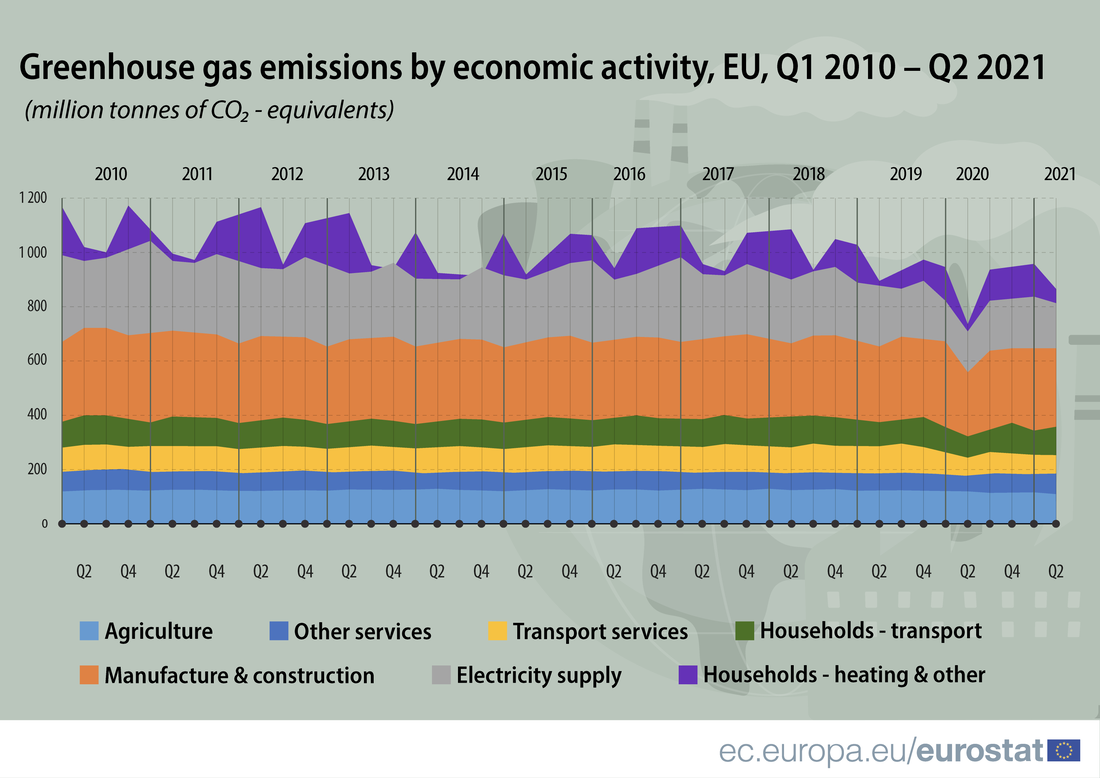 In Europe, farming represents just 1/10th of Europe’s GHG emissions but the sector also provides us with something essential for life, sustenance and nourishment, and... credit where credit is due, the EU is already on a positive GHG pathway though... there's much more to be done. Cow burps do famously contain methane but it’s worth reminding ourselves of the bigger culprits when it comes to greenhouse gas emissions. Improving the insulation of our houses across the board might well be a better place for us to focus our attention. Progress is steadily being made in reducing farming emissions but Energy, Transport, Industry and Buildings contribute nearly 80% of total GHG emissions within the EU. They are the main culprits. As the European Parliament noted in October 2023: “Fuel combustion is responsible for more than three quarters of EU greenhouse gas emissions. Decreasing energy consumption and developing cleaner energy sources are key to reaching the EU’s climate goals and reducing its dependency on imports from non-EU countries.” The Influence of BigFood The term BigFood is used by many, usually in a pejorative manner, to group together the biggest food companies who talk about the positive contributions they make to health and society and yet increasingly profit from our poor eating habits. Following a quick examination of the product and brand portfolios of the biggest players, a better term than BigFood might be BigUPF, particularly considering the largest, Nestlé, whose mission statement says they will "unlock the power of food to enhance quality of life for everyone, today and for generations to come".
But we still eat too much meat don’t we? Well, we certainly eat much more chicken than we did 60 years ago. Per person, we eat slightly less beef, a little more pork but… nearly 6 times as much chicken, yet from all the publicity and GHG comments, you’d think we eat more beef. Sometimes you’d be forgiven for thinking that although eating red meat has been a traditional part of most diets for thousands of years, it has recently started to kill us? Contrary to what is commonly said, inhabitants of Europe and the USA already eat a lot less beef per capita than they did 50 years ago. Americans do eat more meat in total, but only because they now eat so much more chicken - as does most of the world. Could it be that eating more chicken is associated with more obesity and diabetes? After all, rates of type 2 diabetes have risen from around 1% to 10% globally in the last 50 years. As good citizens, we've been advised to eat more white meat (and done so); but there again, what has really changed is the amount of highly processed food we eat. 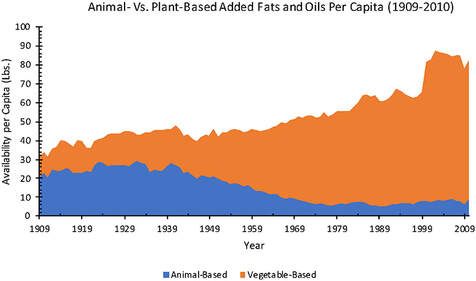 We also eat more sugar-free sweeteners and there is one other significant change looking at the longer-term perspective and that's the significant rise in our consumption of plant-based fats (most consumed as oils or margarine). These are mostly but not exclusively seed oils ranging from sunflower oil to rapeseed/canola oil, soybean oil, corn oil, peanut oil, linseed and more. We are using easily accessible US stats again, but they represent the same general trend as in most other higher income countries. The main consequence is that we now eat much more omega-6 oil than we used too. Conclusion The title posed the question whether plant-based, anti-meat rhetoric is beside the point. I believe that to be often the case. Many factors other than health and the environment are worthy of our consideration when we decide whether or not to eat meat, ranging from animal suffering to the ethics of factory farming, religious beliefs and more. But to review that decision in terms of what is more or less nutritious for our human bodies, we deserve access to unbiased and clearly communicated information based on the best research available. Poorly conducted research reviews combined with the many behind-the-scenes lobbying agendas out there will only lead to confusion – as in the famous, ‘one day eggs are good for you, the next day they are not’ news reports. No wonder many people are exasperated and no longer trust the increasingly faddish diet and nutrition industry. But the subject matter of this post is not concerned with the mainstream media, the gutter press, individual Instagram posts or the comments coming from opinionated influencers for that matter. My concern is that repetitive false reporting can all too easily lead people down the wrong pathways. We're not talking fake news here but rather, poorly informed and often incorrect news which when repeated often enough can lead to brainwashing. The very nature of science relies on a true and accurate reflection of reality, and if we get that wrong, it lets the manufacturers and marketers of highly profitable ultra-processed foods off the hook. By shifting the blame for environmental damage and increasing health problems across society to those who choose to eat meat, these researchers deliver a solid dose of confusion with some added feelings of guilt thrown in. They end up helping the big ultra-processed food concerns who will simply adjust their marketing campaigns accordingly. Reducing greenhouse gas emissions is something to work on across all of agriculture, but if we want better health outcomes, evidence is accumulating that supports dietary guidelines which focus on preparing, cooking and eating less processed food, together with the re-introduction into schools and home life of the skills we need to cook, and an appreciation for real ingredients. Fake, ultra-processed food may be cheap and convenient in a time-stressed world, but if we treat it as an inevitable component of our life, the proportion of those suffering from diabetes, obesity, depression and other metabolic disorders will continue to grow uncontrollably. It is hardly a wonder that now, over 1 billion inhabitants of Planet Earth are considered obese and that most of these people are to be found in the more affluent, westernised countries. Sources:
https://fvm.dk/foedevarer/handlingsplan-for-plantebaserede-foedevarer Handlingsplan for plantebaserede fødevarer https://www.eumonitor.eu/9353000/1/j9vvik7m1c3gyxp/vkmiobvzi1x7?ctx=vhsjgh0wpcp9#:~:text=Fuel%20combustion%20is%20responsible%20for,imports%20from%20non%2DEU%20countries. Reducing carbon emissions: EU targets and policies https://www.statista.com/statistics/1325132/ghg-emissions-shares-sector-european-union-eu/ GHG emisions EU https://www.globalfoodjustice.org/nutrition/public-call-for-retraction-of-gbd-19 it’s time to retract the 2019 global burden of disease risk factor study https://obgyn.onlinelibrary.wiley.com/doi/10.1111/aogs.14778 Vegan diets may raise risk of preeclampsia and low birth weight, study says https://www.thetimes.co.uk/article/serious-errors-in-research-linking-deaths-to-red-meat-qtdh28fv5 ‘Serious errors’ in research linking deaths to red meat https://www.sciencedirect.com/science/article/pii/S0022316622000037?via%3Dihub - Consumption of Ultra-Processed Foods by Pesco-Vegetarians, Vegetarians, and Vegans https://www.oecd.org/gender/balancing-paid-work-unpaid-work-and-leisure.htm Time spent eating and drinking https://futurefoodtoday.com/food/new-york-mayor-boosts-plant-based-treaty/ NYC Mayor boosts Plant Based Treaty https://www.bmj.com/content/384/bmj-2023-077310 Ultra-processed food exposure and adverse health outcomes: umbrella review of epidemiological meta-analyses https://www.bmj.com/content/384/bmj.q439 Reasons to avoid ultra-processed foods https://www.newscientist.com/article/2379973-almost-40-per-cent-of-us-girls-and-young-women-have-low-iron-levels/ https://sustainablebrands.com/read/collaboration-cocreation/unilever-google-nestle-join-forces-to-transform-global-food-systems Twenty-five leading global companies, including Google, Nestlé, Unilever, PepsiCo, DuPont and Kellogg’s announced during the World Economic Forum Annual Meeting in Davos, Switzerland that they were joining together to launch FReSH, the Food Reform for Sustainability and Health program, under the leadership of the World Business Council for Sustainable https://www.sciencedirect.com/science/article/abs/pii/S0959652622027445?via%3Dihub and https://www.healthsystemtracker.org/chart-collection/u-s-life-expectancy-compare-countries/#Life%20expectancy%20at%20birth,%20in%20years,%201980-2022 Anastasiou, K; Baker, Phillip; Hadjikakou, Michalis; Hendrie, G A; Lawrence, M (2022). A conceptual framework for understanding the environmental impacts of ultra-processed foods and implications for sustainable food systems. Deakin University. Journal contribution. https://hdl.handle.net/10536/DRO/DU:30175365 https://www.gse.harvard.edu/ideas/edcast/20/04/benefit-family-mealtime The benefit of family mealtime https://globalizationandhealth.biomedcentral.com/articles/10.1186/s12992-023-00990-1 What is the purpose of ultra-processed food? An exploratory analysis of the financialisation of ultra-processed food corporations and implications for public health https://apps.carboncloud.com/climatehub/product-reports/id/1343989886704 The carbon footprint of Kellogg’s Corn Flakes https://www.foodpolitics.com/2021/06/24491/ Nestlé admits 70% of its products are junk foods
0 Comments
What your tiramisu should contain Tiramisu is a surprisingly easy-to-make Italian dessert. It usually alternates a layer of ladyfinger biscuits, soaked in espresso coffee, and a mixture of mascarpone, egg, sugar and amaretto or marsala. Once prepared, refrigerate for a few hours and sprinkle with cocoa. How the pre-packaged, ‘industrial’ versions were formulated…
To illustrate, here is an example of a packaged Tiramisu by ‘Dolce Mamma’ Nb: It’s interesting how in this ‘industrial’ tiramisu, the traditional main ingredient – mascarpone – is listed as one of the thickening agents 😊. Ingredients: Water, Glucose Syrup, Coconut Oil, Milk Proteins, Wheat Flour, Sugar, Alcohol, Egg Stabiliser: Sorbitols Thickeners: Carrageenan, Xanthan Gum, Tapioca Starch, Mascarpone Cheese (0.5% (Milk), Egg Yolk, Cocoa 0.5%, Dextrose, Soluble Coffee 0.3%), Potato Starch Emulsifier: Mono and Diglycerides of Fatty Acids Raising Agents: Sodium Diphosphate, Sodium Bicarbonate Acidity Regulator: Citric Acid Coffee Extract, Wheat Starch, Natural Flavouring, Cocoa Butter, Salt, Caramelised Sugar, Alcohol Degree 1.8% And the moral of this story is...Eat ultra-processed foods at your own risk and remember the words from Test-Achats -
"Tiramisu is a surprisingly easy-to-make Italian dessert".  Pope Clement VI hired several plague doctors during the Black Death – by 1848, only one of Venice's original 18 doctors remained. The nose mask 'protected' them from contagion. Pope Clement VI hired several plague doctors during the Black Death – by 1848, only one of Venice's original 18 doctors remained. The nose mask 'protected' them from contagion. For most of human history contagious disease has been something you would go out of your way to avoid, or at least try to avoid, the Black Death being a case in point. The bubonic plague which fueled the Black Death, killed off close to 100 million people across greater Europe, about half of all Europeans at the time. Nothing could stop it, certainly not the traveling plague doctors who roamed Europe at the time. Peaking around 1350 AD, the pandemic was caused by miniscule bacteria carried around by fleas. Somewhat ironically, seen from today’s perspective, climate change was indirectly responsible... the fleas carrying the disease having been transported by rodents escaping Central Asia, where it had become too dry to support their lives. Today, the impact of such an infectious disease, were it to occur, would be nothing like on the scale of what it was back then, or more specifically, it would kill a lot less people. We’ve got very good at tackling bacterial and virus borne diseases even while acknowledging that some of our medicines are less effective than they once were. In a nutshell, the way society thinks about such communicable diseases in general has changed – we have mastered them. We know that if we get ill, there’s a box of pills or a syringe full of antibiotics waiting to save us. We think we have the upper hand, but truth be told, we don’t, because we are blind to the current, albeit quite different type of plague which is increasingly affecting individuals and society as a whole. The current plague is being lived every day by people all around us, bringing with it devastating outcomes; we just don’t notice it, or at least, we don’t talk about it in anything like the same way as we would say, with bubonic plague. The reasons are twofold. First, the Black Death was communicable, making it both terrifying and all too often heartbreaking for families and friends. Trying to avoid it, meant staying away from the disease carriers, those being fleas, rodents or the sick people in your vicinity - if you could; and yet, most could not. The other reason was that if you got sick, you didn’t have long to live; almost no-one recovered. You got ill, suffered badly and died in a horrible way, all within a few weeks. Today's plague has no name The way diseases of civilization (NCDs) are treated today is akin to slowing down a train crash video. The awful result is inevitable, but at least you can delay it. The way diseases of civilization (NCDs) are treated today is akin to slowing down a train crash video. The awful result is inevitable, but at least you can delay it. Today’s plague does not present as an illness followed by a quick death. Today’s plague does not even have a name (as yet) - at least not one upon which experts can agree. Today’s plague is more akin to watching a slow-motion train crash where the tragic result is inevitable but you have no influence on the process or the conclusion. You can only delay the result by playing the video even more slowly, or in medical terms, upping the doses of life-prolonging medicine. But today's plague should be revealed, it deserves a name. The name of our twenty-first century plague is hyperinsulinemia – in essence, an excess of insulin circulating around your body. An increasing number of doctors and researchers believe this to be the underlying cause of a large, mixed bag of chronic diseases ranging from type-2 diabetes to many forms of cancer and of course heart disease. It is associated with ailments as far apart as tinnitus and polycystic ovary syndrome and is increasingly associated with the hardening of arteries. Hyperinsulinemia does not necessarily make you obese but if you are, it is most likely the root cause of your excess weight – obesity being simply a marker for your future ailments. 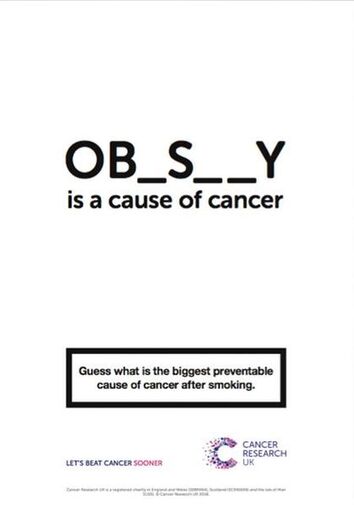 True, there is a strong association, but is it a root cause? True, there is a strong association, but is it a root cause? Much research focuses on the topic of obesity as do the headline writers. It’s easier to put together a story with strong visual impact, and Cancer Research UK’s posters recently warned that obesity has overtaken smoking as the leading cause of major cancers. Research from Harvard in 2017 led to the prediction that more than half (57%) all American children will be obese by the age of 35. But far from being portrayed as a potential disaster, a veritable plague of obesity, many argue that this just represents a shift to a new normal. Others link this rise in average body weight to fat shaming and increasing psychological abuse. In this context, you will also find discussions about healthier snacks and (misguided) recommendations about adding more fibre, fruit and vegetables to your diet, but seldom any root cause analysis. Even Cancer Research UK, when declaring that ‘obesity is a cause of cancer’ only provides us with part of the story. Hyperinsulinemia presents as the most basic, deepest, root cause. Over 10 years ago, a team led by Michael Shanik noted that, “Hyperinsulinemia, insulin resistance, and impairment of glucose-stimulated insulin release are intertwined biologically.” A single process (hyperinsulinemia) could generate all three simultaneously they suggested (Shanik, 2008). More recently, researchers have put forward a convincing case for unifying most of today’s chronic disease under that one term (Crofts, 2015), but in spite of growing awareness, there is still no mainstream acceptance. Type-2 diabetes provides us with the most obvious direct association and it is distressing to note that across the US, over 200 people per day have their legs amputated as a result of related complications. Up to 50% of them die within the following year although no-one talks about that much. Media headlines are likely to feature quicker, more spectacular deaths such as crashes, suicides and military interventions. We don’t really notice the steady stream of ‘non-communicable’ death around us, and diabetes-related deaths are just some of the many whose root cause lies in hyperinsulinemia. A new outbreak of bubonic plague on the other hand? Well… even if it were to only kill a few people, that would hit the headlines straight away, as you can well imagine. The fact of the matter is, we generally treat the symptoms of hyperinsulinemia related illnesses, but seldom the root cause. Most doctors and diabetes organizations do not know or even accept that it is the root cause. They prescribe medicines to slow down the effects of chronic disease, even when they bring their own unpleasant side effects. Ironically, this sometimes involves fanning the fire of disease by adding additional insulin. But does this high level of insulin running through the veins, arteries and organs of so many of us really constitute a plague… a word used generally for life-threatening infectious diseases? Does this make it a 'plague'?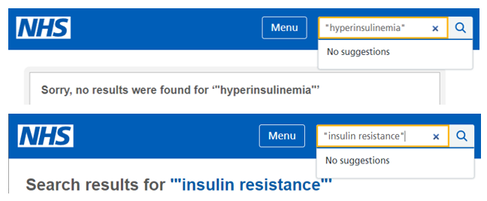 The NHS advice site doesn't acknowledge these words/phrases The NHS advice site doesn't acknowledge these words/phrases I argue that it does. Having an excess of insulin may not be infectious in the classically defined medical sense, but as a symptom of our modern civilization, it is strongly associated with our westernized ways of living. It only becomes rampant with the introduction of western eating habits and ultra-processed foods, as illustrated by the now common incidence of obesity and diabetes among previously healthy Pacific Islanders and the Inuit tribes of Canada. This plague is not transmitted by the touch or breath of another human, nor the bite of a single flea, yet it is transmitted by families and societies who have chosen to (or been encouraged, or forced to) move away from previously healthy foods associated with traditional dietary patterns. In the twenty-first century, we may have succeeded in removing the scourge of malnutrition – food shortage – from most of the world, but we have often replaced it with ‘mal-nutrition’ – food that fills you up but does not nourish you… leading all too easily to hyperinsulinemia. Does hyperinsulinemia even affect enough people to be called a plague or a pandemic? Do we even know how many people around the world suffer from it? Well, no one knows for sure. Britain’s NHS does not even acknowledge the term and although the Mayo Clinic suggests that hyperinsulinemia is most often caused by ‘insulin resistance’, that's another term which is not acknowledged by the NHS. We do however have the ‘metabolic syndrome’ which groups together diabetes, high blood pressure and obesity, all closely associated with hyperinsulinemia, so at least here, we have a starting point for establishing the number of sufferers. The International Diabetes Federation estimates that around 20-25% of the world’s adult population have the metabolic syndrome and states that they are twice as likely to die from and three times as likely to have a heart attack or stroke compared with people without the syndrome. The figures are higher for United States citizens, where the estimate is 30% - that’s about 100 million people alone in the US, although the Centre for Disease Prevention (CDC) estimates the figure to be even higher, putting it at over one third, and that was back in 2012. So, globally, it is likely to include more than one and a half billion of us. 1 1/2 billion! That extraordinary number is the real reason we should be talking about this, especially since those with the metabolic syndrome represent just a subset of all those suffering from hyperinsulinemia, the real root cause. Who benefits from root cause analysis?The big question remains; why do we still not recognise hyperinsulinemia as a global pandemic, a 21st century plague? And this is admittedly where my cynicism takes over. First, there are just too many highly trained specialists around who don’t always link up the dots between high insulin levels and say, cancer - not that it is necessarily in their interest to do so. I mean why open Pandora’s box, or in financial terms, why bite the hand that feeds you? Doctors and surgeons are trained to treat those of us in society who are sick, and they work really hard at it. But whose job is it to stop people getting sick in the first place? There is much more money in treatment than there is in prevention. As always, follow the money and the many vested interests. To be realistic, when it comes to prevention, while the epidemic remains unnamed and unrecognised, nothing much is likely to happen. If you don't even recognise the root cause 'problem', you are unlikely to come up with a solution. Although many acknowledge that the treatment of non-communicable disease will be the biggest medical and societal task of the 21st century, too few acknowledge (yet) that hyperinsulinemia is the principal underlying cause. Most of those in the front line occupy themselves with individual diseases and treatments; they simply cannot see the forest for the trees. And; there are still too many organizations and committees who’ve been blaming micro and macro factors such as sugar, saturated fat, salt, an excess of calories and too little exercise for our woes. Sugar is most certainly involved but… to adopt a more positive glass half-full attitude, wouldn’t genuine root cause analysis provide an opportunity to bring the scientific, dietetic and public health communities together? Controlling the plague by improving communication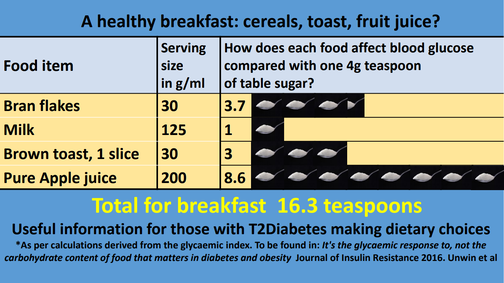 Courtesy of Dr Unwin and PHCUK – a brilliant portrayal of keeping communication simple Courtesy of Dr Unwin and PHCUK – a brilliant portrayal of keeping communication simple When treating individual metabolic diseases such as type-2 diabetes, we generally prescribe medicines which target the symptoms. Even taking a step back towards the root cause, we group together these connected diseases of civilization, using far too many different expressions, from diabesity to metabolic syndrome to insulin resistance and more. The proverbial man or woman in the street is rightfully confused. Yet we have learned that simple communication is the best communication. When you explain to a patient that their diabetes is caused by a growing intolerance to carbohydrates and give them some of Dr Unwin’s spoonful of sugar brochures, they get it; they know what to do. Tell them that they have metabolic syndrome or are becoming insulin resistant and they go… What? To simplify communication with the wider world, we should adopt a lesson from management text books – Keep It Simple Stupid (KISS). And in this context, there is one word to rule them all? Hyperinsulinemia, meaning ‘too much insulin’. Importantly, the pathway to treatment is provided in the word itself; and being self-explanatory makes it a more effective communications tool, in spite of its eight syllables. Interestingly, that might make it even more memorable (think: ‘do, re, mi, fa, sol, la, ti, do’, then say ‘hy, per, in, su, lin, e, mi, a'). Get it? By recognizing hyperinsulinemia as the real master-villain, the plague that it truly sums up, we do however open up interested parties to a potentially frightening thought: all these related diseases are curable or at least reversible through lifestyle interventions, most notably, lower-carbohydrate diets and most probably, a move away from ultra-processed food. And because the medical specialists and insurance organisations, the clinics, hospitals and drug companies make so much money from an old, communicative-disease model inherited from the world before this kind of chronic illness ruled the roost; what is their incentive for change? Well, there probably isn’t one, at least not in the short-term. But if all those involved could agree to focus their efforts on communicating this one word, 'hy per in su lin e mi a', at least we’d have a better starting position. Most importantly, it’s so much easier for the ‘layman’ to understand. Imagine a patient who’s just been told she is suffering from hyperinsulinemia, understanding immediately that ‘too much insulin’ is the core problem and coming up with questions like, “So, how can I reduce my insulin levels?” or “why on earth am I taking insulin then?”. Imagine her delight when the doctor answers that she can get results through challenging but easily achievable lifestyle interventions that begin in her own kitchen. Wouldn’t that be a good start? Thinking bigger and scarier = communicating better It seems obvious to treat the condition topically, yet the rash is truly a sign of 'the plague'. Again, we miss the root cause. The cream merely provides a temporary band-aid. It seems obvious to treat the condition topically, yet the rash is truly a sign of 'the plague'. Again, we miss the root cause. The cream merely provides a temporary band-aid. If you are still, as yet, unconvinced by these arguments for referring to hyperinsulinemia as a modern-day plague, here is one more reason. Perhaps I should say, a provocation. To promote change and make this topic newsworthy for journalists and other opinion leaders, we need to think bigger. Consider just one subset of our modern-day plague sufferers; those who exhibit skin ailments. Psoriasis and other insulin related skin conditions are still mostly treated with topical creams when in reality, they are linked to chronic inflammation which, in turn, is linked to metabolic factors, principally to excessive insulin circulating in the body (Gyldenlove, 2015). That’s why metformin and other hypoglycemic drugs are now being prescribed more frequently as methods of treatment. Admittedly, this represents a step along the root cause pathway but it still implies treatment of the symptoms rather than the true cause. Shock tactics? For bloggers and journalists, lifestyle adjustment stories that tackle the real problem would be stronger and more appealing if psoriasis were shown to be a sign of having the plague – a visual marker for hyperinsulinemia. Yes I did just write that. I am well aware that talking in such terms can be scary and potentially discriminatory but thankfully, we won’t need plague doctors to provide solutions to the root cause when most remedies lie so easily within our grasp, namely in what we eat and drink. If we choose not to be more scary when discussing today’s plague, how are we ever going to stop it from simply growing and growing, injuring and eventually shortening the lives of millions more people. While dietitians, doctors and other vested interests tackle the symptoms of hyperinsulinemia without acknowledging or even recognizing the cause, and experts feud over the carbohydrate-insulin model of obesity, the plague continues to collect its victims. The historian Suetonius informed us that Emperor Nero watched from a tower while Rome burnt, playing an instrument, giving rise to the expression that he was ‘fiddling while Rome burns’. There is a great danger that while more and more inhabitants of this planet succumb to hyperinsulinemia related illnesses, the mainstream medical community is also in effect, ‘fiddling’, just like Nero did nearly 2,000 years ago. Notes:
At the time of writing, Britain’s NHS has no mention of insulin-resistance or hyperinsulinemia on its website. https://www.nhs.uk/search/ The risks of having hyperinsulinemia include: Higher triglyceride levels, High uric acid, Hardening of the arteries (artherosclerosis), Weight gain, Hypertension, Type-2 diabetes. https://www.diabetes.co.uk/hyperinsulinemia.html This policy brief explains the double burden of malnutrition now facing many countries worldwide – characterized by the coexistence of undernutrition along with overweight, obesity or diet-related noncommunicable diseases (NCDs). https://www.who.int/nutrition/publications/doubleburdenmalnutrition-policybrief/en/ Specific Sources: Shanik, M, et al. 2008: “Insulin Resistance and Hyperinsulinemia. Is hyperinsulinemia the cart or the horse?” Diabetes Care 2008 Feb; 31(Supplement 2): S262-S268. https://doi.org/10.2337/dc08-s264 Crofts, C et al. 2015: Hyperinsulinemia: A unifying theory of chronic disease? https://care.diabetesjournals.org/content/31/Supplement_2/S262 https://www.diabesity.ejournals.ca/index.php/diabesity/article/view/19 Pahdi, T. 2013: Metabolic Syndrome and Skin: Psoriasis and Beyond https://www.ncbi.nlm.nih.gov/pmc/articles/PMC3726879/ Study reveals link between psoriasis and type 2 diabetes (2016) https://www.diabetes.co.uk/news/2016/may/Study-reveals-link-between-psoriasis-and-type-2-diabetes-97737508.html Gyldenløve, M et al. 2015: Patients with psoriasis are insulin resistant https://doi.org/10.1016/j.jaad.2015.01.004 https://www.sciencedirect.com/science/article/abs/pii/S0190962215000079 Ip W, Kirchhof M, G. 2017: Glycemic Control in the Treatment of Psoriasis. Dermatology 2017;233:23-29. doi: 10.1159/000472149 https://www.ncbi.nlm.nih.gov/pubmed/28538228 Other sources: IDF Consensus Worldwide Definition of the Metabolic Syndrome https://www.idf.org/e-library/consensus-statements/60-idfconsensus-worldwide-definitionof-the-metabolic-syndrome Ultra-processed food - Fresh evidence links popular processed foods with a range of health risks https://www.bmj.com/content/365/bmj.l2289 Doctors of the Black Death - The infamous plague doctors of the Middle Ages were a fearsome sight http://www.doctorsreview.com/history/doctors-black-death/ Pacific islanders pay heavy price for abandoning traditional diet https://www.who.int/bulletin/volumes/88/7/10-010710/en/ Type 2 diabetes, once considered rare in Inuit communities, is now comparable to rates in the general population. https://www.cbc.ca/news/health/inuit-type-2-diabetes-gap-worsens-1.1044126 The UN Decade of Nutrition, the NOVA food classification and the trouble with ultra-processing https://www.cambridge.org/core/services/aop-cambridge-core/content/view/2A9776922A28F8F757BDA32C3266AC2A/S1368980017000234a.pdf/un_decade_of_nutrition_the_nova_food_classification_and_the_trouble_with_ultraprocessing.pdf Dr Unwin’s NICE Endorsed Sugar Equivalence Infographics https://phcuk.org/wp-content/uploads/2019/05/Common-Breakfast-13.05.2019.pdf Harvard researchers studied more than 25,000 American kids — and made a worrisome prediction about what they'll be like by age 35 https://www.businessinsider.com/more-than-half-of-us-kids-will-be-obese-by-35-2017-11?r=US&IR=T Cancer Research UK accused of 'fat shaming' over obesity smoking campaign https://www.telegraph.co.uk/science/2019/07/04/cancer-research-uk-accused-fat-shaming-obesity-smoking-campaign/ Type 2 diabetes drug helps psoriasis, too https://www.psoriasis.org/advance/type-2-diabetes-drug-helps-psoriasis-too Some Definitions: NCD – Non-communicable disease Definition of Plague – “a serious, potentially life-threatening infectious disease that is usually transmitted to humans by the bites of rodent fleas”. https://medical-dictionary.thefreedictionary.com/plague Metabolic syndrome - the medical term for a combination of diabetes, high blood pressure and obesity. https://www.nhs.uk/conditions/metabolic-syndrome/ Hyperinsulinemia - Hyperinsulinemia is most often caused by insulin resistance — a condition in which your body doesn't respond well to the effects of insulin. https://www.mayoclinic.org/diseases-conditions/type-2-diabetes/expert-answers/hyperinsulinemia/faq-20058488 Pandemic - A pandemic is an occurrence of a disease that affects many people over a very wide area. https://www.collinsdictionary.com/us/dictionary/english/pandemic Diabesity - Molecular links between Obesity and Diabetes = “Diabesity” https://www.ncbi.nlm.nih.gov/books/NBK279051/ Two pieces of research published this week added to a host of similar research that’s emanated over recent years, suggesting the amount of junk food we now eat is killing us. To be more precise, too much junk food makes us fat and ill, and the consequence over time will be premature death. That illness-factor is down to non-communicable diseases which range from type 2 diabetes through hypertension to certain cancers. Remarkably, one of these pieces of research came from France, a country not known for its ‘junkfood’ diet, so just imagine what would happen if such research were carried out in the US or UK, where on average, more than half the diet is ‘junk’. Using data from 44,551 French adults who participate in an ongoing French study (an observational cohort study launched in May 2009), the results are difficult to dispute. So what is junk food? Let's first consider briefly a separate research paper, this time of a quite different nature. Kevin Hall of the US National Institute of Diabetes and Digestive and Kidney Diseases in Bethesda, published the results of a one-month, intensive random controlled trial, which showed the following: when people have no choice - that is, they are fed a diet of exclusively junk food - they eat substantially more compared to when they eat a diet of minimally processed food. In just four weeks, they gained close to a kilo on the junk food diet while losing on average more than a kilo when eating what many refer to as #realfood - technically, that's minimally processed food. Add these two pieces of research together and the message is simple: if you limit the availability of junk food, you are likely to have an effective anti-obesity strategy. Bingo, we have potentially solved the world's largest epidemic. But... not so fast. 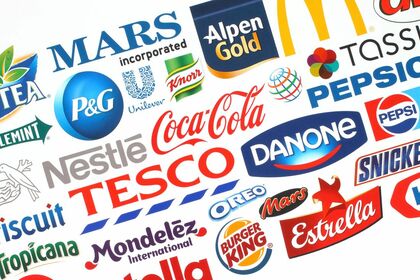 Most of the world's 'junk food' comes from just 10 giant corporations. Most of the world's 'junk food' comes from just 10 giant corporations. So back to that question, since we quite evidently need more precision; what then is junk food? For the purposes of both of these pieces of research, we are looking at a broad range of food and drinks encompassing pretty much all ultra-processed food (UPF), and this is the definition of such junk food that they use: “The formulation and the ingredients of these products make them highly convenient (ready-to-consume), highly attractive (hyper-palatable), highly profitable (low cost ingredients), and – of great importance – highly competitive with foods that are naturally ready to consume and freshly prepared dishes and meals. As a result of their formulation, products belonging to this food group are intrinsically nutrient unbalanced and tend to be consumed in great amounts. We termed this group ‘ultraprocessed food and drink products’.” In a nutshell, we are talking about the ‘bread and butter’ business of all large international food companies, from Nestle to Unilever to PepsiCo and more... except butter, of course is a minimally processed food! In fact, just 10 large enterprises with their global supply chains control most of the highly profitable, highly processed food that we eat more and more of every day. They also employ hundreds of thousands of people around the world, and enjoy connections that reach high up into the government bodies and charitable institutions that provide us with dietary guidelines and sundry advice.  Healthy reformulation? Less sugar, a bit more aspartame... Bingo Healthy reformulation? Less sugar, a bit more aspartame... Bingo Will we act on this new information? We kind of know that junk food is bad for us but now, thanks to the latest research, the correlation is getting stronger. There is no proof... no direct causal linkage, just as there's no real causal linkage between eating saturated fat (regular milk and butter) and heart disease or consuming red meat and colon cancer, but we acted on them and changed dietary advice based on smaller and less damning correlations. So the critical question is: will we act on this new information? That's highly unlikely. Too many jobs are involved and too many vested interests stand to lose face - and money. It's much easier to blame fat, salt and sugar and get the big companies to reformulate their 'new improved junk food' with the latest concoction of artificial sweeteners, cheap oils, emulsifiers and so on. Mark my words, the message for years to come will remain, 'move more and eat less', oh and 'count your calories'. Insanity is famously defined as doing something repeatedly and expecting different results. Well, I guess we live in a crazy world. 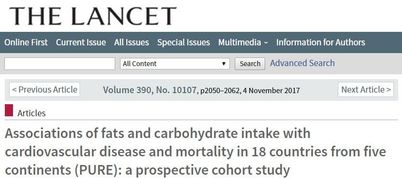 The first batch of ground-breaking PURE results published in November 2017 The first batch of ground-breaking PURE results published in November 2017 No-one suspected when the PURE study details were published in 2009, that a battle between two dietary ideologies would become so polarized. It is a war that has never officially been declared, and sometimes, you might even find it difficult to spot who's on which side, but those with a vested interest are pushing hard. This war of opposing scientific viewpoints and ideologies has led to some unholy alliances, which is disturbing, because the health of our Western civilization is at stake. Picture if you can, the bureaucratic medical establishment, who believe that saturated fat (particularly that found in meat and dairy) plays a major role in heart disease and is a leading driver of chronic disease including type-2 diabetes. Many of their number are still convinced that eating saturated fat also raises your ‘bad’ cholesterol levels, even though you might think the tide has pretty much turned on that one.  Is the medical establishment doing what's best for you and me, or is it trying to preserve the status quo? Is the medical establishment doing what's best for you and me, or is it trying to preserve the status quo? Joining them is a bunch of well-trained nutritionists, ably supported by processed and packaged foods manufacturers everywhere, a large number of old-school doctors, a network of sponsorship deals from the likes of Kellogg's and Nestle plus certain mostly well-intentioned charities and health-promotion companies. Making up their numbers are various interested parties, mostly worried about losing their established reputations. Adding rather unexpectedly but noisily to their cause is the power of the vegan movement which does not want to acknowledge any potential health benefits associated with meat or dairy. Elsewhere, you might find a much smaller, mixed bunch of enlightened and enthusiastic doctors, inquisitive scientists and well-informed journalists, who for many years have suspected that it's been tobacco, sugar and the increasing amount of highly processed food in westernized diets that are the principal causes of heart disease and rising chronic health problems. A cheery noise is coming from this group but it's not yet enough to compensate for their lack of numbers and the financial support which continues to help create a consistent hum of guidelines and advice from the establishment area. They like to talk to each other via social media so thinking about it, they are seldom to be found meeting physically together. What do these two groupings have to do with the PURE study? Well, no-one knew quite what to expect when the initial PURE report from 2009 set out the study design, together with the justification, and the methodology for their large-scale work. The paper showed that between 2002 and March 2009, they had already successfully recruited 139,506 individuals - well on the way to their 150,000 target. In it, they reaffirmed their desire to build on the nine cardio-vascular risk factors that had already been identified in the well-respected INTERHEART study which interestingly, had been unable to shed light on why levels of risk varied so much across countries and regions. INTERHEART simply attributed the general increase in cardio-vascular disease rather vaguely to an increased proportion of older subjects, and changing societal factors, particularly urbanization. But the authors of the PURE study had no idea back then that they were entering the saturated fat wars, particularly since at the time, the 'evils' of fat were more or less a given. Everyone knew that saturated fat was bad for you. It would take until late 2017 to get their first official results but while we waited, the mainstream opinion - namely that fat, particularly saturated fat in our diets, drove cholesterol levels up and contributed to heart disease - continued to drive food labeling initiatives and innovation within the food industry. Even milk marketing organizations had begun encouraging the consumption of lower fat milk while industry giants such as Unilever with an array of 'healthy' margarines, had stealthily launched fat information websites where eminent doctors eulogised over the benefits of unsaturated vegetable seed oils. Oldways, the inventors (as they put it) of the Mediterranean diet pyramid, somehow managed to find food solutions that were inevitably healthier when they were lower in fat, in spite of olive oil's alleged goodness. 2018: The tide is turning...
Last month in Geneva, Fiona Godlee, the distinguished editor of the BMJ spoke out about the demonization of fat, particularly saturated fat, in her summary comments at the Swiss Re international medical conference. Even the high profile British member of parliament Tom Watson has been speaking out about why low-carb, high fat ketogenic diets work - with the support of cardiologist Aseem Malhotra, for added medical credentials. ... yet the old guard still marches to the old tune.Politicians and 'nutritional experts' in the US and UK however, continue to push through ideas based on defining junk-food as a salt/saturated fat/sugar related problem – HFSS, and they are all equally guilty! 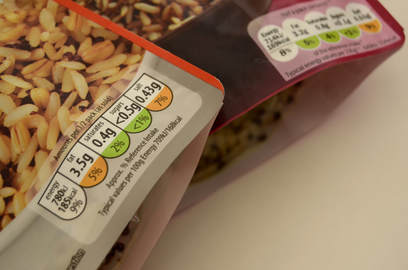 Every time we buy, we are reminded that calories, saturated fat, sugars and salt are the things to watch out for. Every time we buy, we are reminded that calories, saturated fat, sugars and salt are the things to watch out for. Even in France, which enjoys the lowest rate of cardiovascular disease in Europe, the Nutriscore labeling system now places red warning signs for high fat on packs of almonds while Diet Coke gets an all-clear green light. Yet Salim Yusuf, the lead author of the PURE study and President of the World Congress of Cardiology in 2015 and 2016 has already indicated that the next phase of results to be published will make it even clearer that saturated fat is not the guilty-player and that highly processed foods represent the major association with heart related problems. The question is: who is listening? The industrial food supply chain employs millions of people around the world. Is anyone prepared to take them on? Bad news for industrial food supply chains relying on a long shelf lifeThe PURE results are not good news for the processed, packaged food manufacturers or anyone else with a vested interest in preserving the status quo, so they are busily working together with nutrition organizations, reformulating and tweaking their ultra-processed food ingredients. The likes of Nestle, Kraft-Heinz and Mondelez really do not want to get involved in revealing complex manufacturing processes and discussing ingredients such as emulsifiers, preservatives, flavourings, or other methods to extend shelf-life and cheapen their basic carbohydrate-rich ingredients. It is much more manageable for them to be seen to be reducing fat and sugar, or to quietly add more artificial sweeteners while reducing portion sizes and reformulating products - that's something they can handle. In just two years, most UK fizzy drinks have gone from being sugar-rich to containing large amounts of aspartame, sucralose, xylitol and other chemicals to replace the sugar high which is now more heavily taxed. Arguably, they are now more heavily 'processed' than ever. In February of this year, a large French cohort study upped the ante by suggesting that a 10% increase in the consumption of processed food leads to a 10% or greater increase in cancer, particularly breast cancer. And there are more such studies in the pipeline, so… maybe this is now becoming a more intensive fight between the two groupings. Maybe, ‘BigFood’ thinks it can win by showing how much it has reformulated and cooperated while complaining that the other side has changed the rules in the middle of the battle? After all, McDonald’s used to cook their fries in beef tallow before being advised to switch to vegetable oils that contain very little saturated fat. “We’ve been following all the guidelines and behaving as good corporate citizens”, they can say. There are also many important social dimensions involved in nutrition and chronic disease such as growing food deserts, having the money to buy better food and having the wherewithal to avoid the junk-food ridden world most of us in the Western world are faced with every day. But... that should not be used as an excuse to stop us addressing the issue of packaged and processed foods. Almost 60% of US calories for the period 2007-12 came from ultra-processed foods; and the figure is undoubtedly even higher today. Sadly, those eating most of this 'junk-food' tend to be the less educated and those on a lower income. I know - some righteous voices are saying that a crackdown on ultra-processed food is equivalent to snobbishly taking food away from those in need. Put within a UK context, let the 'upper-classes' eat more unprocessed food while ‘we’ enjoy our pizzas and bacon butties. These people make such comments at their peril and are avoiding what we have learned from these recent studies. Diets consisting mostly of ultra-processed food are killing us, by spreading chronic disease. What use is access to cheap food when it is slowly poisoning you? Can we research our way out of this mess?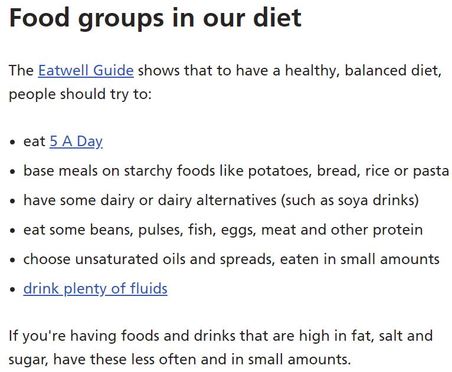 The starch rich NHS 'healthy diet' still does not advise you to eat fresh food and freshly cooked meals when you can... and continues to equate salt, sugar and fat as the three common evils. The starch rich NHS 'healthy diet' still does not advise you to eat fresh food and freshly cooked meals when you can... and continues to equate salt, sugar and fat as the three common evils. Change - accepting the truth about ultra-processed food, and that saturated fat is harmless and probably beneficial for most of us - will come slowly, but can we speed it up? From a research point of view, the papers that get published are usually, at least in part, financed by those who have a vested interest in proving a point. Just look at the number of attempts to link higher cholesterol levels with poor health outcomes over the last 20 years. Who will finance case control studies that involve stopping people eating ultra-processed food for a year or more? The fast-food eating control groups would be easy to find but, the cases? Who would sponsor such volunteers, just to to eat real food? Smaller initiatives like that launched by the UK’s Public Health Collaboration (PHCUK) are more likely to win over hearts and minds than the rationality of research papers. The public is all too familiar with the “It’s Tuesday and today, eggs are good for you”, reporting style that is ubiquitous in the tabloids. PHCUK are advocates of ‘real food’ and lower carbohydrate diets for those who are insulin resistant, but to show you just how far there is to go, Britain’s National Health Service does not (at the time of writing) even have a web-page indexed for Insulin Resistance. They do mention metabolic syndrome, with a link to ‘healthy eating’ which takes you to Eatwell visual above. That's right; base your meals on stodge. How do they get away with that I wonder? We almost certainly still have a long way to go before the continuing results of the PURE study and the link between bad health and eating ultra-processed food become mainstream thinking. One year, five years, twenty years… but will it be too late? I wonder? Sources: https://bjsm.bmj.com/content/51/15/1111 - Saturated fat does not clog the arteries: coronary heart disease is a chronic inflammatory condition, the risk of which can be effectively reduced from healthy lifestyle interventions https://www.bmj.com/content/361/bmj.k2139/rr-3 Could we agree to demonize processed food, not saturated fat? https://www.bmj.com/content/360/bmj.k322 Consumption of ultra-processed foods and cancer risk: results from NutriNet-Santé prospective cohort https://assets.publishing.service.gov.uk/government/uploads/system/uploads/attachment_data/file/216094/dh_123492.pdf Nutrient Profiling Technical Guidance https://www.ncbi.nlm.nih.gov/pmc/articles/PMC5855172/ Consumption of ultra-processed foods and associated sociodemographic factors in the USA between 2007 and 2012: evidence from a nationally representative cross-sectional study http://institute.swissre.com/research/library/food_for_thought_fiona_godlee_john_schoonbee.html NHS Dietary advice: https://www.nhs.uk/live-well/eat-well/ The Public Health Collaboration: https://phcuk.org/ This is an excerpt from an excellent article published in The National (UAE) - "The National reaches an influential audience across the country, covering the best in news while leading the region in analytical content and commentary. The National is committed to serving the local community with a strong international perspective." Professor Monteiro says the NOVA classification system is nothing less than “a revolutionary approach” to the nutritional issues currently posing a major public health threat in the developed world – not least because it points the finger of blame not at greedy or lazy consumers but at the corporations feeding them so-called ultra-processed foods. NOVA, he told The National, “allows a precise identification of the main driver of the pandemics of obesity and other chronic diet-related non communicable diseases, such as diabetes, cardiovascular disease and many types of cancer”. And that driver, he says, “is the transnational corporations that control the manufacture and marketing of ultra-processed food worldwide”. Ultra-processed products, says the NOVA group, have certain “common attributes”, such as “hyper-palatability” – the idea that highly processed foods can be addictive – “sophisticated and attractive packaging, multi-media and other aggressive marketing to children and adolescents, health claims, high profitability, and branding and ownership by transnational corporations”. And, crucially, a “role in the pandemics of diet-related non-communicable diseases”. The NOVA group’s most recent paper, published last month in the journal Public Health Nutrition, looked at the proportion of ultra-processed foods in diets in 19 European countries, by analysing national household budget and dietary surveys. Results varied widely. In Portugal, they found that only 10.2 per cent of daily calories came from such foods. The worst performing country was the UK, where they accounted for over 50 per cent of calories. When they then looked at obesity rates in the 19 countries, they found “a significant positive association” between intake of ultra-processed foods and national prevalence of obesity. Again, with 24.5 per cent of the population obese, the UK was the worst performer, while Portugal was among the best. Full article at: https://www.thenational.ae/uae/ultra-processed-foods-what-are-they-and-are-you-eating-too-many-1.701659
If, in spite of this, you are still considering a lower-carb diet, even perhaps a keto-diet that drops the carbs down close to zero, you might need some encouragement. I suggest reading an article published on Business Insider UK which tells one person’s success story with a ketogenic approach - in great detail. Her summary? She feels like a super-hero and sees the weight loss as an added benefit rather than a driving force. Trouble is; no-one really makes money currently from ketogenic approaches. WeightWatchers who came in at number #4 in the U.S. News diet rankings, have their own brand presence, and in general, processed food companies like to get behind them and other calorie based programs. In contrast, 'Keto' is a generic approach, with the power being in the individual's hands. Or you could go for the ubiquitous Mediterranean Diet that tops the rankings. The claim? “The not-so-surprising secret is an active lifestyle, weight control, a diet low in red meat, sugar and saturated fat and high in produce, nuts and other healthful foods.” The Mediterranean-Diet appears to be largely sponsored by Oldways, at least judging by the number of credits they get… and Oldways, although nominally a not-for-profit, is sponsored by most of the world's leading processed food manufacturers. Oh well as the French Mediterranean dwellers like to say: "plus ça change, plus c'est la même chose". References:
https://health.usnews.com/best-diet/best-diets-overall https://medium.com/@davidludwigmd/genetic-study-supports-carbohydrate-insulin-model-of-obesity-327d84be6d2b http://uk.businessinsider.com/what-is-keto-diet-beginners-2017-12?r=US&IR=T https://oldwayspt.org/programs/mediterranean-foods-alliance/join-mfa/mfa-packaging-symbols
While everyone accepts that diet plays a big role, entrenched opinions, definitions and varying viewpoints on today’s junk food culture combine to stop a clear message emerging. Battles between different dietary approaches and the views of their advocates continue to play out, using information and misinformation from both established viewpoints (who hate change and don’t want to accept they might be wrong) and from numerous health pundits. Add to that many industry groupings and lobbying groups from the Bigfood and Bigpharma categories who also chime in, concerned about the potential impact on their future profits. Looking ahead, one thing is clear: Type-2 Diabetes, as well as being debilitating for more and more individuals is likely to become financially unsupportable for many governments. They simply won't be able to afford to care for all those afflicted. And it's all so predictable. Confusion reigns
In a world of alt-facts, we still trust our doctorIf like me, you’ve reached the conclusion that eating a real food diet with fewer carbohydrates is the best way to go - whether you are diabetic or not - you’ve probably read books, considered the available research and carried out some successful self-experimentation. You may have been influenced by the well-researched, thought provoking nature of Gary Taubes' or Nina Teicholz’s writing, or perhaps the inspirational approach taken by Professor Tim Noakes in South Africa. Whichever the case, your new-found convictions are probably strengthening. But for most people, to really deeply believe in the effectiveness of a health message means getting our convictions at the grass roots level, communicated to us by a General Practitioner. That's simply because generalist doctors belong to the declining group of influencers who still enjoy our trust. In a recent Ipsos Mori poll, Doctors led the field with an 89% trust factor, leaving bankers (37%) and politicians (21%) far behind. Doctors like Aseem Malhotra (albeit a cardiologist) and Rangan Chatterjee (famous for his Doctor in the House TV series) with their lifestyle related lower-carb, higher-fat convictions, have been gaining influence. Their approach adds to the more day-to-day experience of practitioners such as Dr David Unwin in his award winning Southport GP practice, or the considered advice from diabetes expert Dr David Cavan as outlined in his bestseller, Reverse Your Diabetes. If you intuitively agree with the benefits of such a lower-carb lifestyle approach, then with doctors like these on your side, you are in good company.
On that count by the way, it is self-evident, a truism, to say that we’re all different, yet it's pretty much irrelevant when it comes to preventing or stopping the rise in Type-2 Diabetes cases around the world. After all, not everyone who smokes 20 cigarettes per day dies from lung cancer, but only the smallest minority would now dispute the validity of banning ads or adding warnings to cigarette packets. The successful battle against lung cancer has been fought with a clarity of purpose and conviction… not by nickel-and-diming interpretations and dimensions of difference. What's true is that for most of those diagnosed as pre-diabetic, and pretty much all those who suffer from Type-2 Diabetes, the evidence is overwhelming. A lower-carbohydrate, higher-fat diet, based on eating real food helps almost everyone, and the specific proportions of carbs and fat that work best for you are indeed, a matter for personal trial and error. My personal tip: start low with the carbs and then gradually increase. I'm currently at 60-70 grams of net carbs per day - and I suppose that the fact I know this clearly puts me in the nerd category:) Confuse them and you'll lose them
Keep it simple stupid (KISS)Let’s begin by simplifying the communication chain: What are the 3 core problems associated with type-2 diabetes?
From tacit agreement to convictionOK - you're nodding your head in acquiescence, yet not totally convinced. This is where I come in - the experienced communications guy. The oldest parts of the brain (in evolutionary terms) are responsible for your fight or flight response, but also for the final say when it comes to decision making. When you’re absolutely sure of something, your New Brain (Cortex) will decide rationally what the right course of action is to be, but you won’t completely buy-in to that decision until the instinctive part (Old Brain) chimes in and agrees. Put differently, you make decisions based on emotions and then post-rationalise the whys, wherefores and other ‘reasons’ for moving ahead. The decisive yet instinctive Old Brain sees simple, straightforward relationships between things. It hates complexity. That’s why I firmly believe that there is little chance of shifting mind-sets unless there is a stronger and clearer starting position. That's why, Type-2 diabetes needs to be defined as what it really is, at least in 99% of cases; a disease of carbohydrate intolerance. If it would help in reaching agreement more quickly, perhaps we could all agree on: “Type-2 Diabetes is primarily a disease of carbohydrate intolerance”. When defined and communicated in this way - as a disease of carbohydrate intolerance – it becomes clear, logical and much easier to understand for all those at risk. "It stands to reason: I need to reduce the amount of carbohydrates I eat at every opportunity - in particular, by avoiding both sugar and starchy food". Crucially, if your GP uses that same language of 'carbohydrate intolerance', because of that existing bond of trust, your Old Brain will chime in with its support too.
This guest post was written by: James Capon MBA, a communications expert, former President of Levi Strauss in San Francisco and partner with SalesBrain Europe. He began eating low-carb a few years back and feels much better for it.
The great lateral thinking expert, Edward de Bono likes to tell the story of a factory that needs clean water for its industrial processes and as a result, pollutes the river water for town inhabitants living downstream of the factory. Rather than passing draconian laws or getting the factory to co-sponsor water filtration in the river, the clever town council simply mandated that the factory take in its fresh water from somewhere downstream of its own industrial buildings (see below); the factory then became a victim of its own effluence! This decision provided an existential threat to the continued use of the factory and so, not surprisingly, the problem got solved - quickly. As a clever 'lateral thinking' approach it is also one which has been used in the real world. At an individual level, it is the equivalent of giving someone a taste of their own medicine - that being the same treatment that they dish out to others. But... Could a lateral-thinking approach help deal with our increasingly obese world and rising levels of Insulin Resistance? Work commissioned at the start of the UN's Decade of Nutrition(1) (2016-2025) revealed a strong association between 'ultra-processed food and drink' and the spread of chronic disease. A BMJ article(2) from 2016 showed how 'added sugar' also correlates strongly with this ultra-processed category. In total, added sugars represented 1 in 5 of these ultra-processed food calories(21.1%), far higher than the other three categories of processed foods at 2.4%, unprocessed/minimally processed foods, and processed culinary ingredients grouped together at 3.7%. Ultra-processed food(2): formulations of several ingredients which, besides salt, sugar, oils and fats, include food substances not used in culinary preparations, in particular, flavours, colours, sweeteners, emulsifiers and other additives used to imitate sensorial qualities of unprocessed or minimally processed foods and their culinary preparations or to disguise undesirable qualities of the final product. So, is ultra-processed food just guilty by association? After all, we know that correlation does not prove causation. But there again... The UN-anchored hypothesis on the table is that a significant reduction in the amount of processed food consumed would lead to less chronic disease. That is - to put it mildly - not in the interest of large food companies, whether manufacturers, distributors or retailers, because they rely heavily on the higher levels of profit they obtain with these hyper-processed packaged foods. To stop this hypothesis becoming mainstream thought, they are fighting this connection tooth and nail. And yet, the US based research pointed clearly at something most of us would have no problem accepting at an instinctive level. The authors wrote: "This study suggests that decreasing the dietary share of ultra-processed foods is a rational and effective way to improve the nutritional quality of US diets." Does 'BigFood' really want what's best for us?
The 'About Us' website listings certainly make it sound as if they only want the best for us. Nestlé wants to contribute to 'a healthier future', Kraft Heinz aims for 'great taste and nutrition' while just this month, PepsiCo announced the "first eight nutrition, health and wellness brands joining its collaborative incubator programme in Europe". They all claim to be interested in our good health and in creating a better world... and yet I somehow doubt it. Pretty much all of the packaged food, drink and fast-food they produce falls within the ultra-processed category. So these representatives of #bigfood are major contributors to arguably the biggest health problem currently facing civilisation - the huge rise in number of those suffering from non-communicable chronic diseases, such as type-2 diabetes, obesity and Alzheimer's. That's what now provides our starting point for revisiting the successful type of approach used by that father of lateral thinking, Edward de Bono. Here goes: Our revised starting point: Instead of repeatedly over-analyzing macro and/or micro ingredients and playing around with formulations and percentages, we should simply accept the UN recommendations that the whole category of Ultra Processed Produce (UPPs) is deeply problematic. In the bigger scheme of things, reducing the sugar content of breakfast cereal by 10 per cent won't be of much help; nor will 20 or 30 per cent for that matter, particularly when it's often replaced by synthetic alternatives such as Aspartame. The biggest change to our eating habits over the last 50 years, as the world becomes progressively more Westernized, is that people rely more and more on processed, packaged goods. That is the real problem we face. Because this is not clearly accepted or understood, it has not been sufficiently communicated that there is also a price to pay for such convenience; an environmental cost and a personal health cost for these 'faster', less perishable foods. In the US, UPPs already represent on average 60% of the annual calorific intake - for many individuals, it's a much higher percentage - and the rest of the world is quickly playing catch up(3). The Idea = The Solution: I am sure managers at Food & Beverage companies do from time to time eat their own food or drink their own drinks. But what would happen if, in order to step up and become a senior manager, they needed to make one simple commitment: ...to sign up for food and drink exclusively sourced from their own product portfolio. Why not? After all, company PR statements always emphasize the nutritious and positive qualities of their goods, often together with some expression of deep concern for humanity. We'd have to enforce it properly of course. If you were caught out, you'd have to leave your well-paid job:), but there again, what would be so wrong with that? Perhaps as a result, one of these #BigFood CEO's would then feel obliged to state clearly that the major part of your diet should come from real food and home cooking - to be supplemented occasionally by their branded foods and drinks. In itself, that would represent just a small step, but one that would already be a very big deal; because nutritional guidelines such as the Eatwell Plate do not state anywhere that you should eat ultra-processed foods only occasionally. Yet the evidence indicates that you should. It is my considered opinion (and supported by the UN documentation) that the most important nutrition message of all is totally missing from today's guidelines. Encouraging people to go low-fat or eat 5-a-day, even if it were a good message, is not the same as telling people that they are self-harming on too much ultra-processed food and drink. You're thinking that this would be too limiting for these poor food execs, aren't you? Well consider this; As a senior manager at PepsiCo, you could start the day with Aunt Jemima pancake syrup on your Quaker Oats and a glass of Tropicana OJ, snack on Lays, Walkers or Cheetos during the day, drink Gatorade, 7UP or Pepsi if you're thirsty, then dip Doritos in your Sabra hummus before dining out at Pizza Hut or KFC with whom PepsiCo has lifetime contracts. What could be so wrong with that? After all: at http://www.balanceus.org/en/, Pepsi together with Coke and Dr Pepper have "come together to support your family’s efforts to balance what you eat, drink and do". But balance might have to be interpreted and expressed rather differently when faced with eating exclusively from your own ultra-processed product portfolio. You'd be receiving a strong taste of your own medicine. What do you think? Sources:
(1) http://www.who.int/nutrition/decade-of-action/en/ (2) http://bmjopen.bmj.com/content/6/3/e009892 (3) http://www.health.com/mind-body/6-ultra-processed-foods-to-throw-out-right-now Source for all three named companies: Website 'about us' information.
It does not help that the phrase ‘junk food’ is often used interchangeably with ‘fast food’. Maybe that’s why politicians make reference to junk food in their fiery speeches yet never in their policy decisions. Head-nodding junk food rhetoric can fire up the emotions, but there are a lot of votes at stake if you trouble the fast-food industry - a major employee category, particularly in urban areas. In this opinion piece - Yes, a Big Read - I set out to clarify what junk food really is; why it is important that we officially define it, and why the resulting labeling should be made clearly visible on packages, in restaurants and at the point of sale. I am not trying to get junk food banned, just labeled appropriately. Then when people decide to eat that piece of cake, slice of pizza or snack-bar, they will know and better understand the role it plays in their overall diet - and what it's doing to their body. Such labeling would bring our attention back to the importance of less processed foods, to real food ingredients, to home-cooking and provide a better platform for the re-introduction of basic cooking lessons into a school’s curriculum …until such a time as their parents re-discover what their parents don’t seem to have passed on; cooking skills and the importance of family meals.
A singular feature of NOVA is its identification of ultra-processed food and drink products. These are not modified foods, but formulations mostly of cheap industrial sources of dietary energy and nutrients plus additives, using a series of processes (hence 'ultra-processed'). All together, they are energy-dense, high in unhealthy types of fat, refined starches, free sugars and salt, and poor sources of protein, dietary fibre and micronutrients. Ultra-processed products are made to be hyper-palatable and attractive, with long shelf-life, and able to be consumed anywhere, any time. Their formulation, presentation and marketing often promote overconsumption. The UN Decade of Nutrition at https://www.ncbi.nlm.nih.gov/pubmed/28322183
|
Sammy Pepys"FAT IS OUR FRIEND" ADVOCATES A DIET: Sammy Pepys was the pseudonym used by James Capon when writing this book. He is not a doctor or a nutritionist but has studied nutrition and holds an MPH from Edinburgh University. Over the years, he has become increasingly suspicious of today's conventional wisdom about diet and health. When it comes to what we eat, he has helped many learn to eat more healthily.
Archives
May 2020
CategoriesArchive
|
|||||||||||||||||||||||||||||||||||||||||||||||||||||||||||||||||||||
| 1_blog_march_2014.docx | |
| File Size: | 546 kb |
| File Type: | docx |
| 2_blog_april_2014.docx | |
| File Size: | 245 kb |
| File Type: | docx |
| 3_blog_may_2014.docx | |
| File Size: | 642 kb |
| File Type: | docx |
| 4_blog_june_2014.docx | |
| File Size: | 426 kb |
| File Type: | docx |
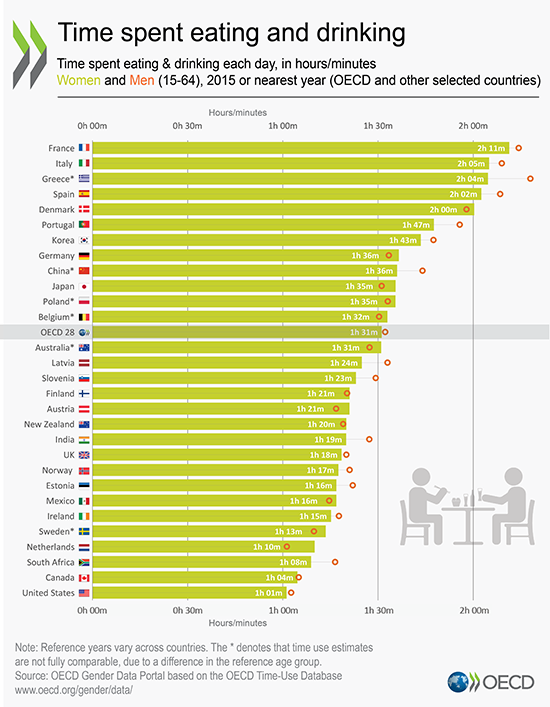
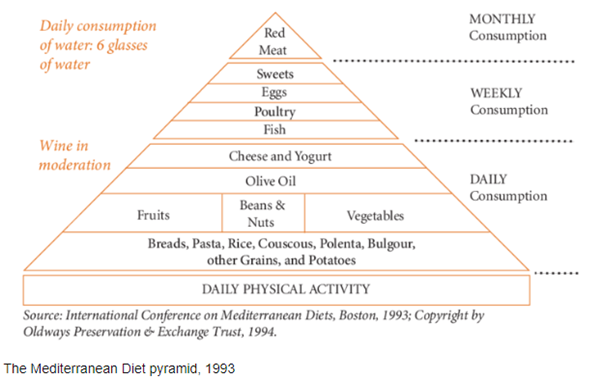
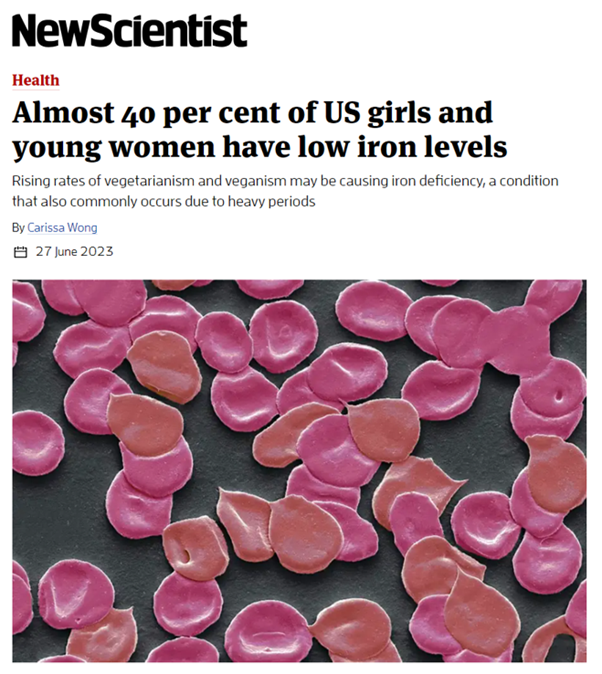
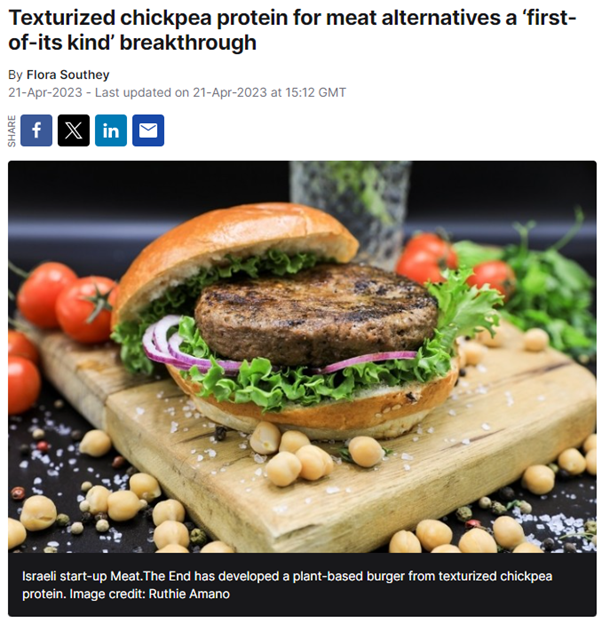
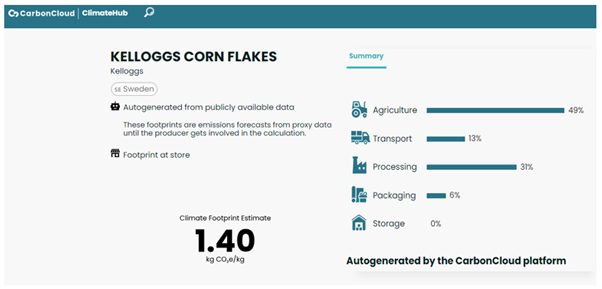
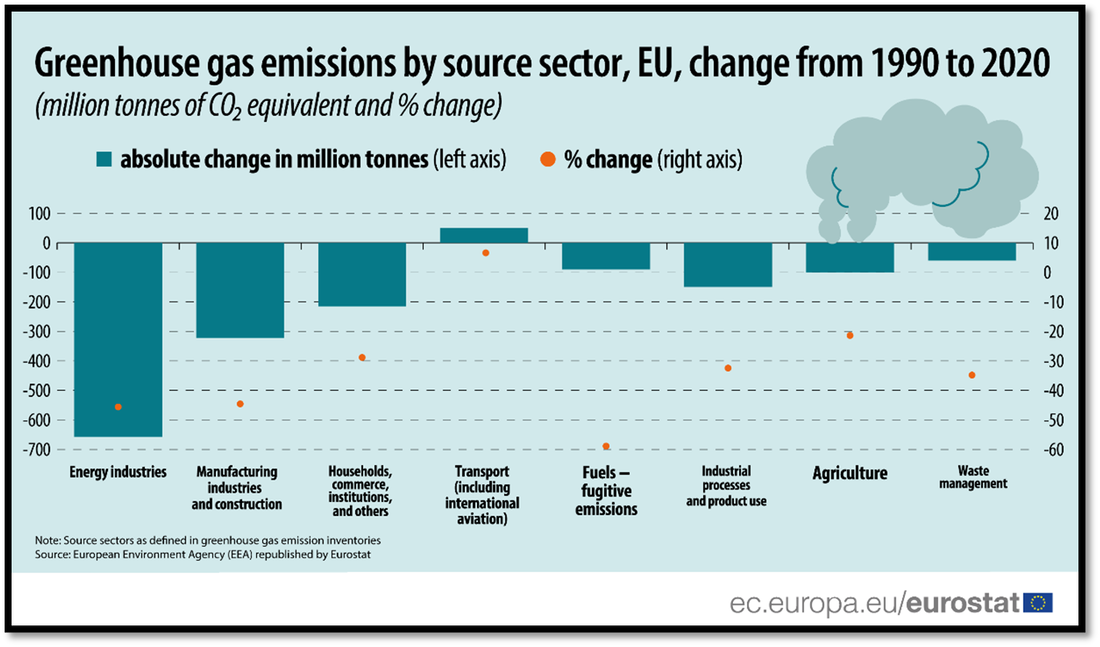
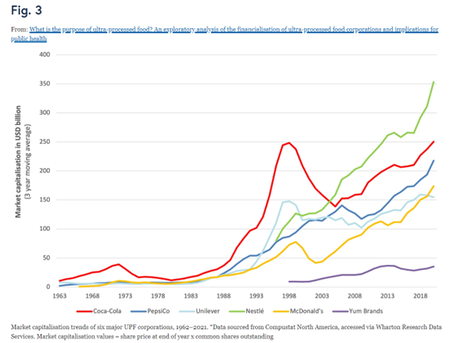
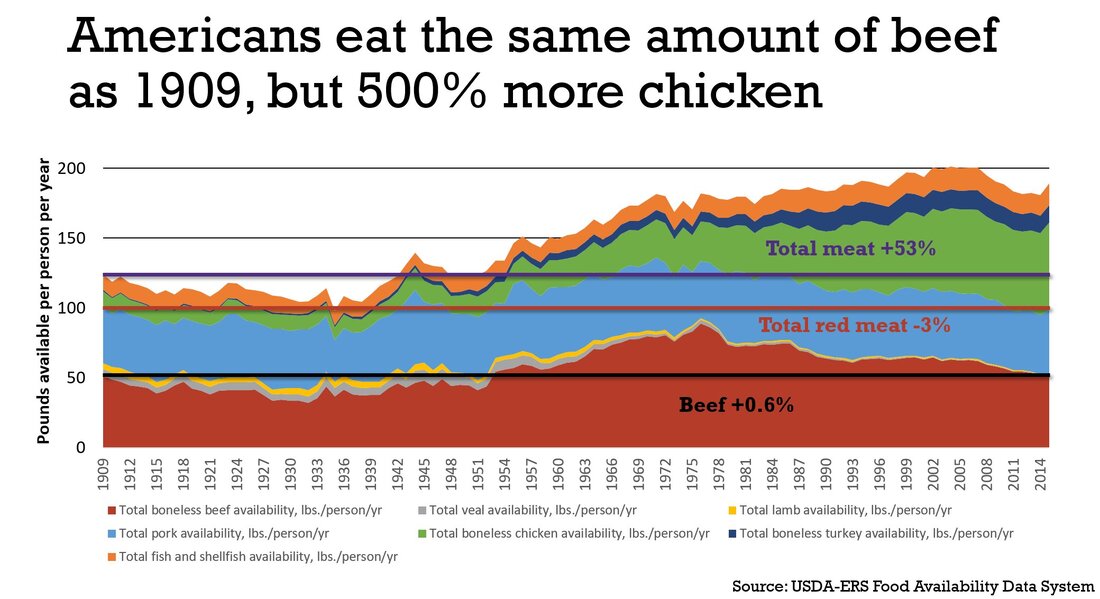

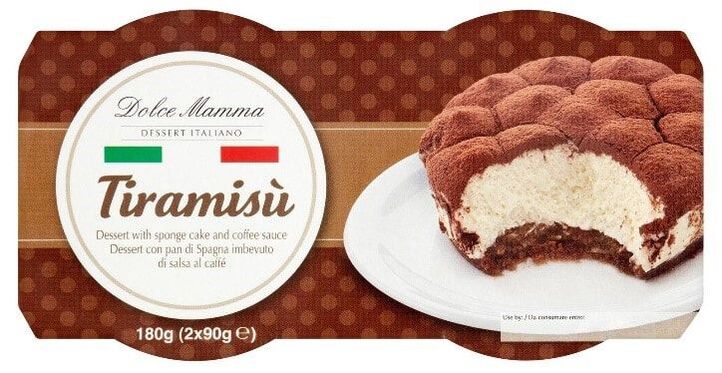

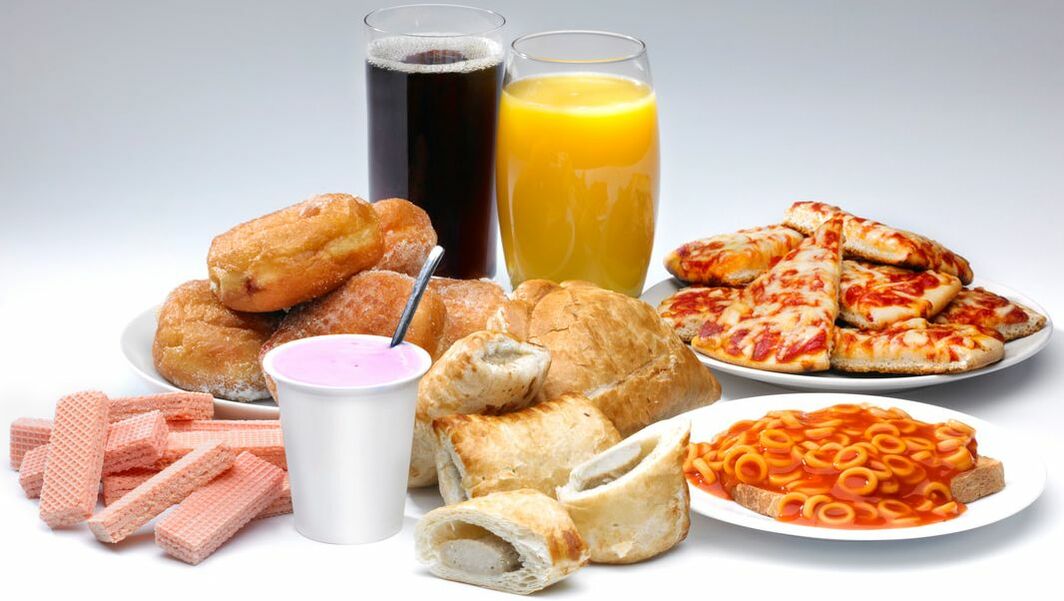
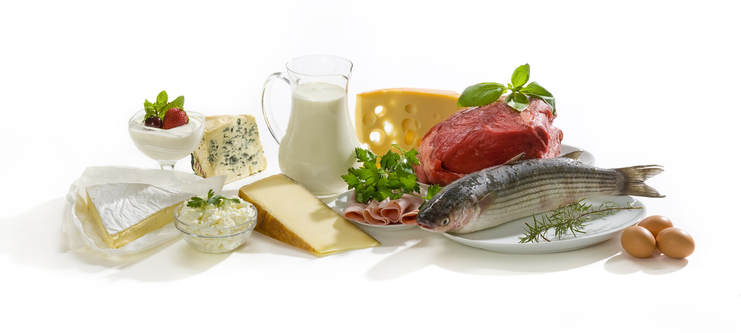

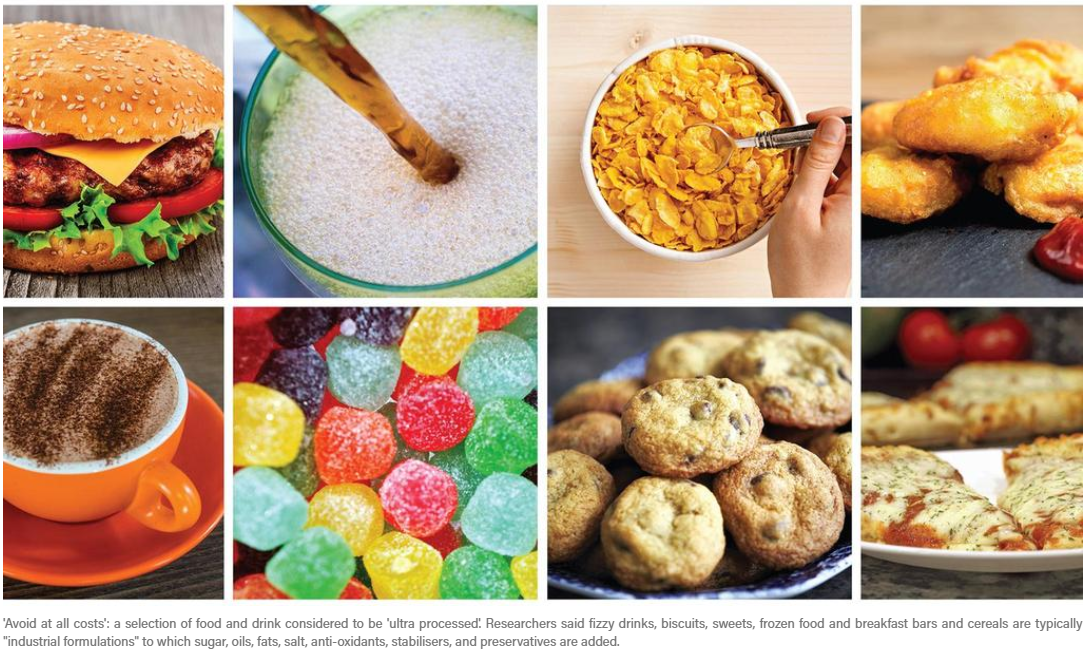
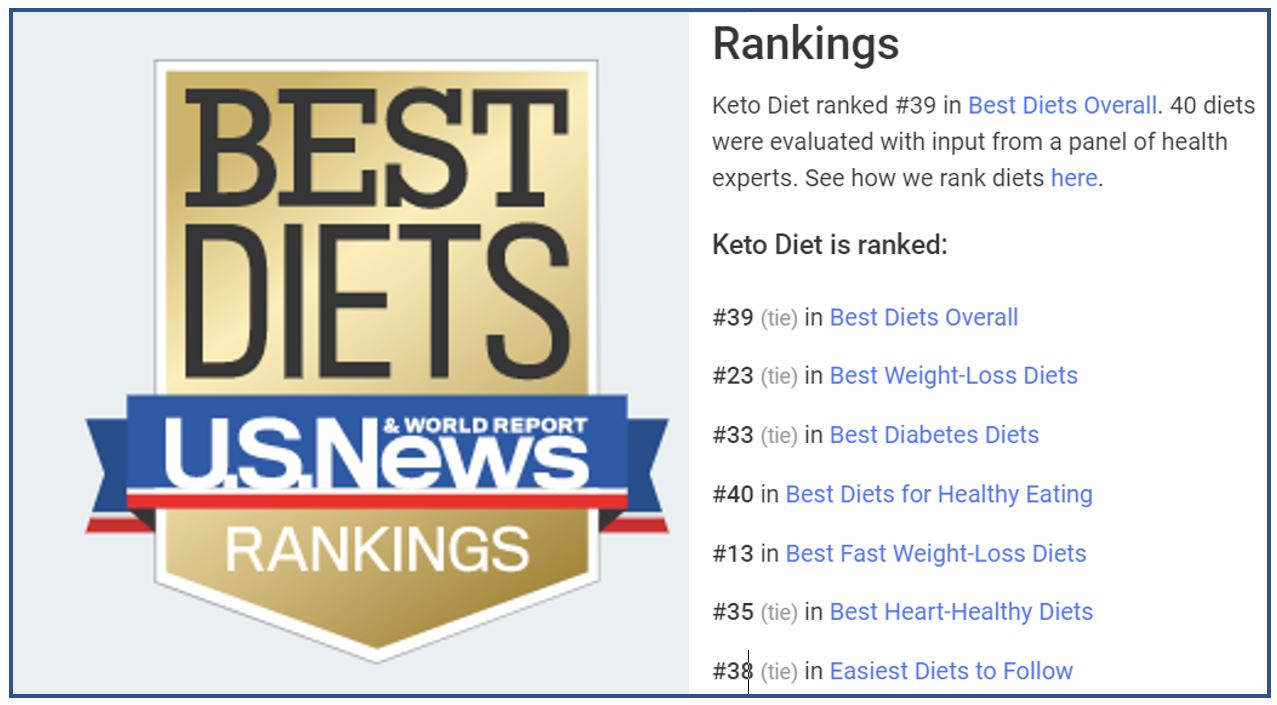
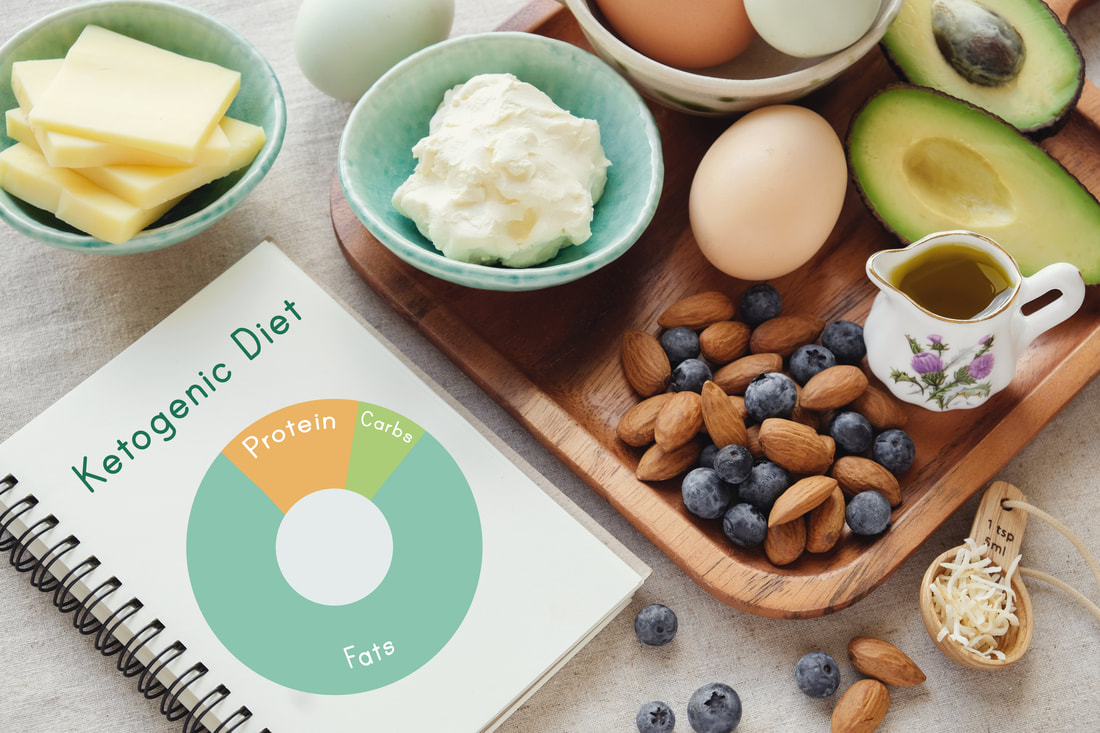

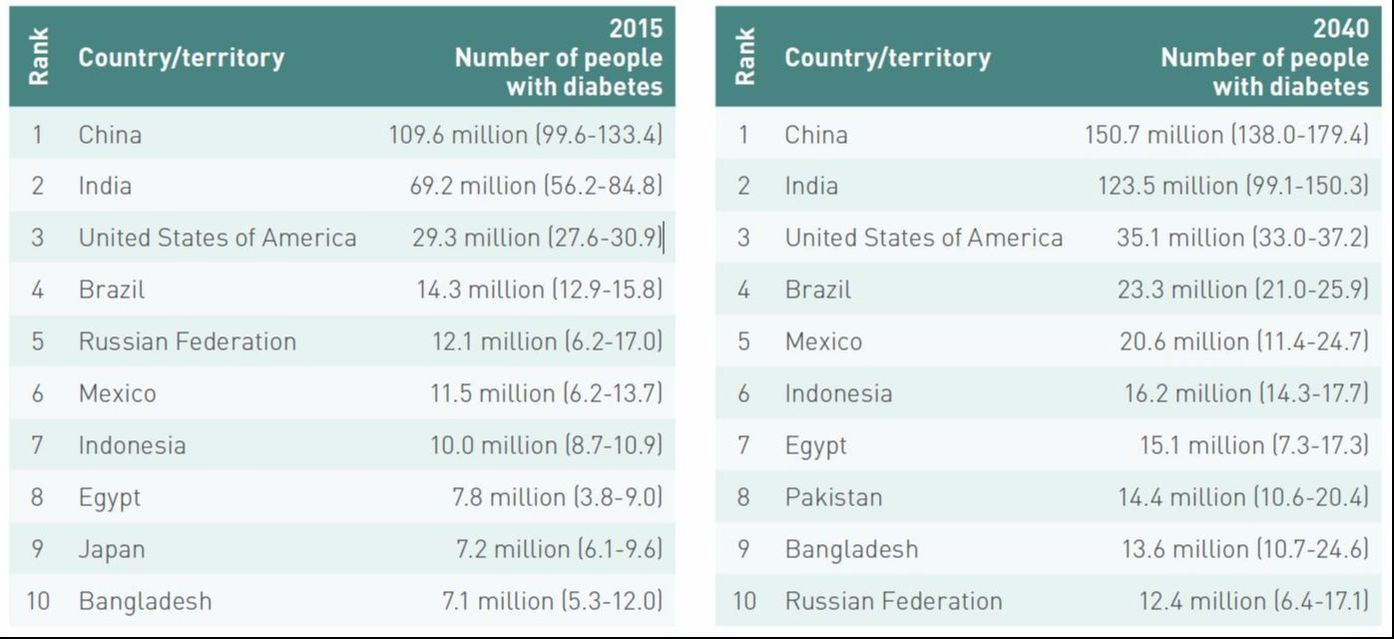

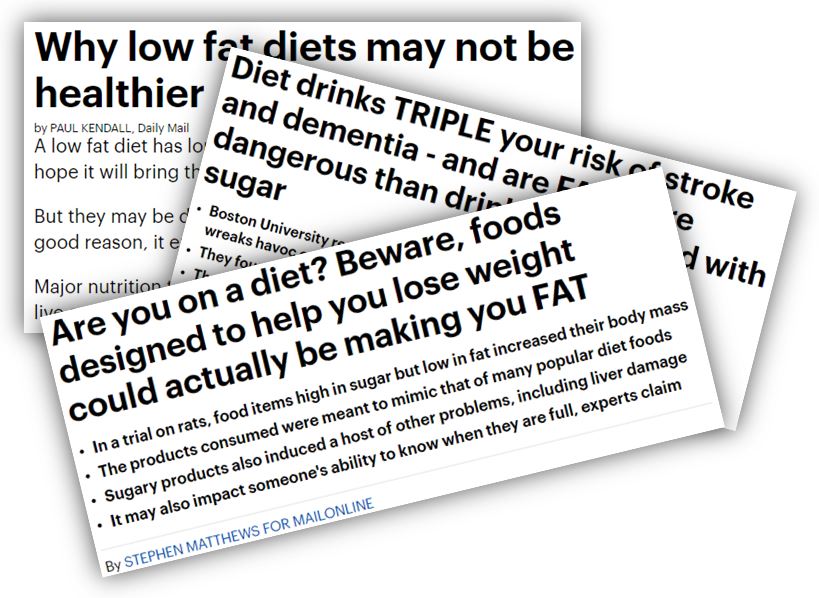
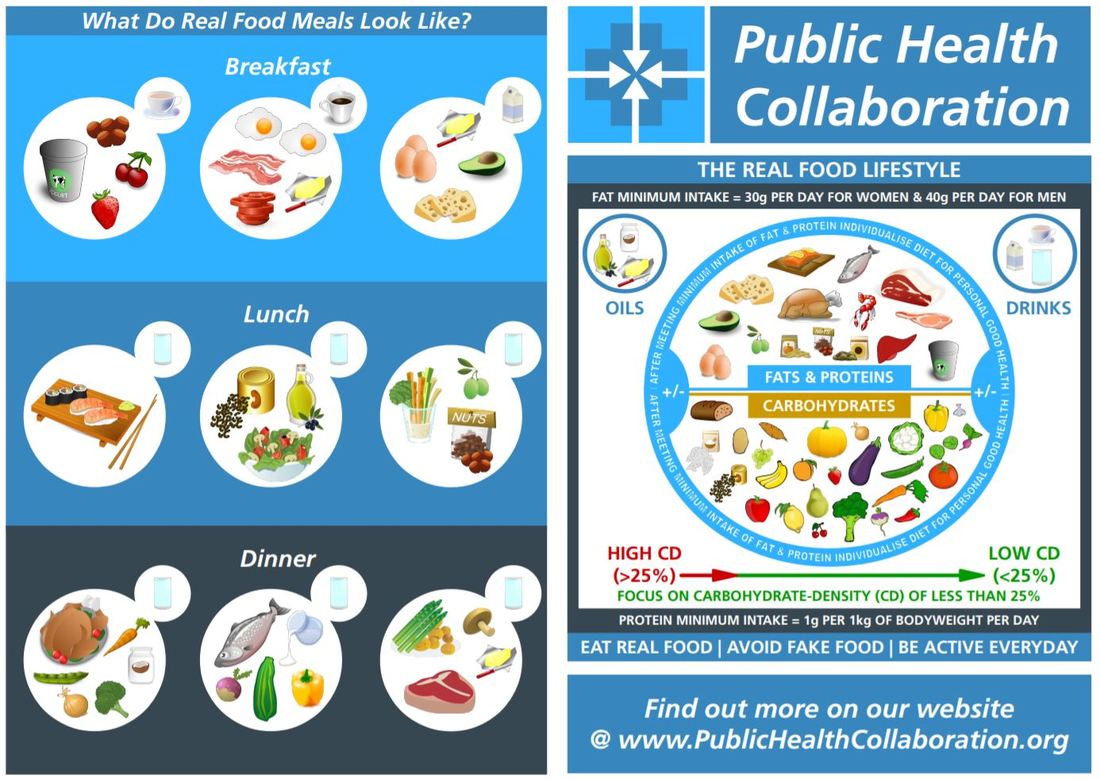
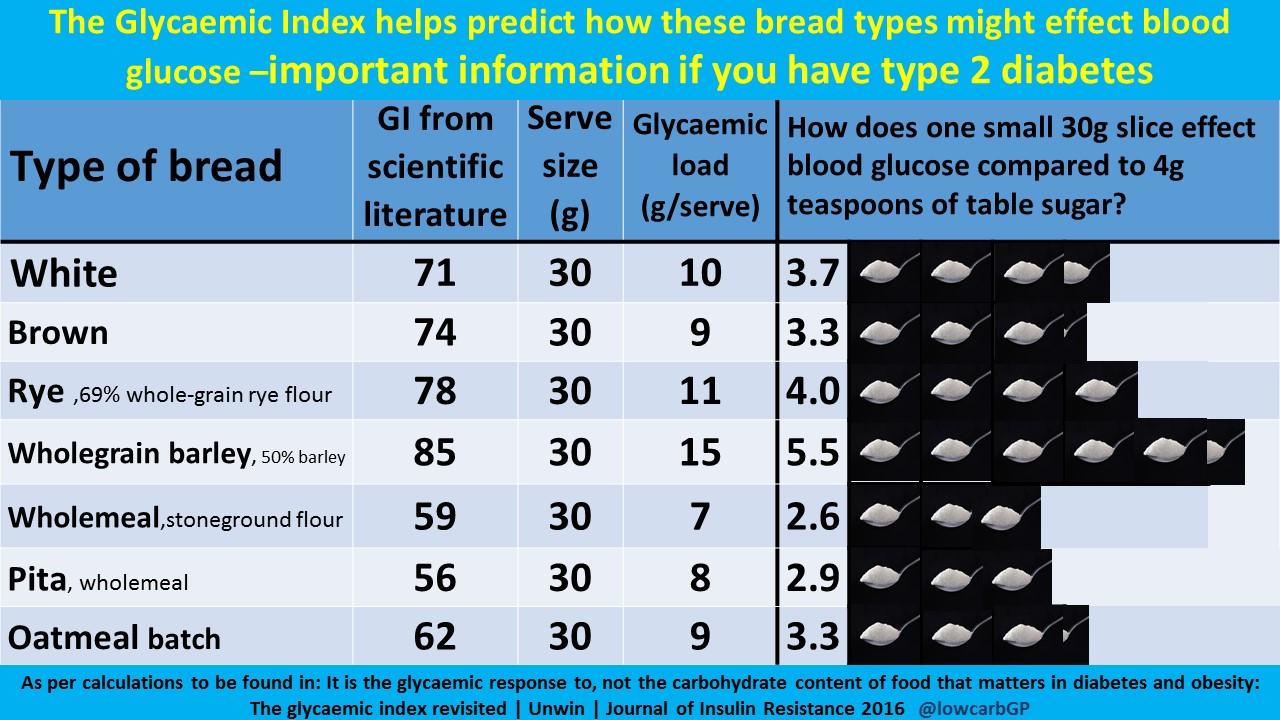

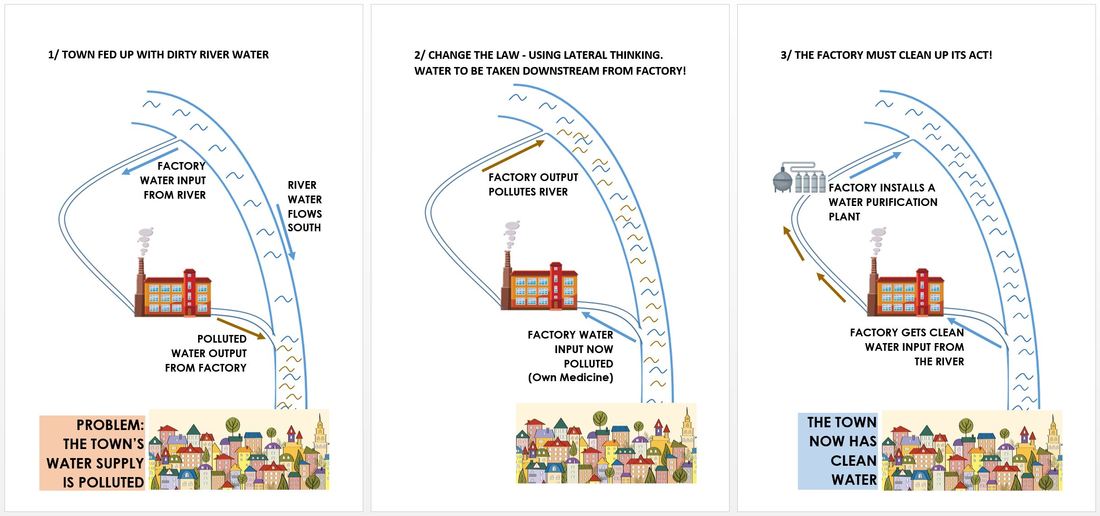



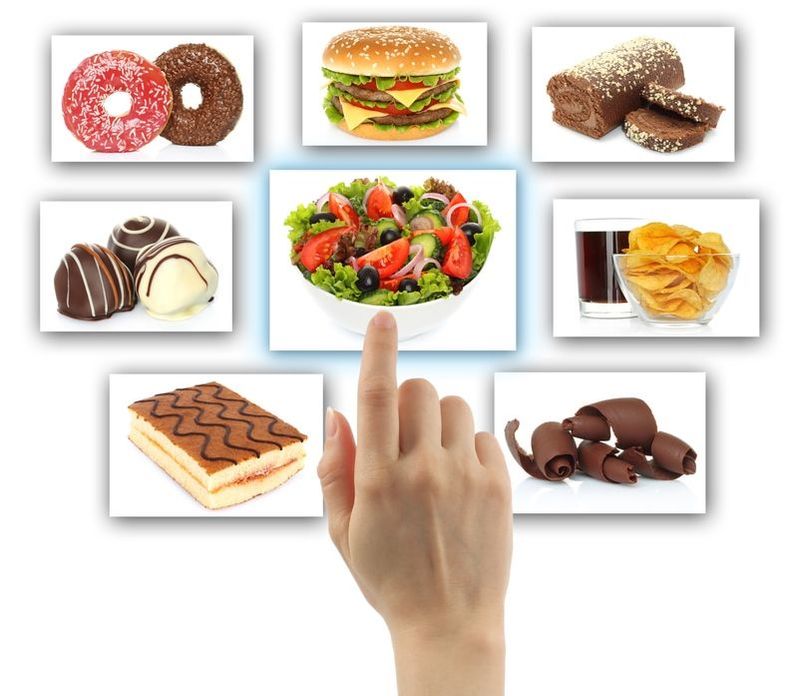
 RSS Feed
RSS Feed